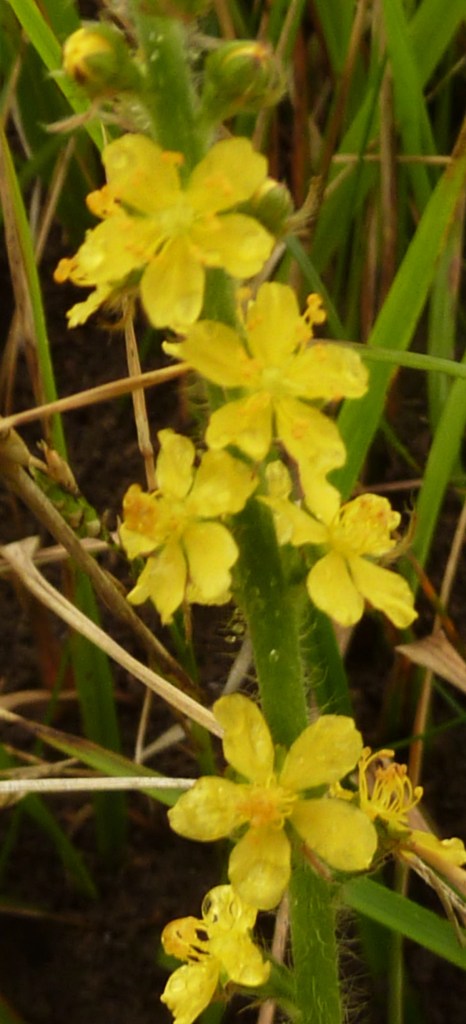Recently I was asked whether I could do a post specifically about the medicinal uses of our native plants!
Unfortunately, the use of herbs for medicine, on the British Isles, as well as in Western Europe civilisation is very limited! We all seem to be depending on the pharmaceutical industry, which is very sad as surely many cultures and people in the world still depend on their native plants for everything, especially food and medicine!
There are very few Herbalists nowadays even in my area of the Midlands and people rely on the NHS far too much. Eating healthy and plenty of exercise do help but we can’t avoid stress and polution.
According to Wikipedia: ‘The World Health Organization (WHO) estimates that 80 percent of the population of some Asian and African countries presently use herbal medicine for some aspect of primary health care’
For the purpose of this post I like to highlight and I have used two good books on the subject which I recommend if you like more detailed information:
- The Medicinal Flora of Britain and Northwestern Europe compiled by Julian Barker.
- Hedgerow Medicine by Julia Bruton-Seal & Matthew Seal.
- I also have used Wikipedia as well as the website of The 38 Bach Flowers with thanks!
Number 1 is a wonderful book; not just a flora with several keys for identification purpose of (medicinal) native plants but a proper account on all their uses.
It is a good reference book for perhaps the serious amateur and the professional Herbalist.
The plant entries are divided in the dicotyledons under families 1 – 78, which highlights and describes all the 1-453 species of those families + their medicinal uses. Next come all the monocotyledons with family 79 – 85 and species 454 – 507.
As this book was published in 2001, some of the family names and positions have been altered in the more recent flora’s under the APG IV system of flowering plant classification. This is mostly a molecular-based, system of plant taxonomy for flowering plants (angiosperms) being developed by the Angiosperm Phylogeny Group (APG).
To keep this post in line with my usual posts I will list the families in the order of the Medicinal Flora by J. Barker in the contents.
The book concludes with an index to therapeutic indications for internal as well as external herbal medicines.
Number 2: ‘Hedgerow Medicine’, describes in very well written chapters, 50 common ‘hedgerow plants’ to create your own safe medicines.
But please refer to these books or preferably an experienced herbalist if you need more medical help! This post is purely educational as to give an indication of our ‘wonderful weeds’ and their uses as a medicinal plant.
The 50 plants described in Hedgerow Medicine are placed behind the appropriate family below.
I’ve used the original headline/summary of the plants as copied from the book with thanks from the Publishers, Merlin Unwin Books, who allowed me to use this excellent information! Please buy a copy for yourself as you’ll find it is well worth it!!
All the 100 or so families from the Medicinal Flora are below in the contents and 30 of those families are highlighted with links. The Rosaceae (Rose family), Lamiaceae (Dead-nettle family) and Asteraceae (Daisy family) have the most medicinal plants in the Hedgerow Medicine book.
I’ve also added a link to my wonderfulweed chapter on the family and all its uses if I’ve already got a post on it! The page with all the plant families in the B.I. can be found here.
Contents:
DICOTYLEDONS:
- Salicaceae or the Willow & Poplar family: Willow (Salix alba & S. fragilis)
- Myricaceae or The Wax Myrtle & Canleberry family
- Juglandaceae or The Walnut family
- Betulaceae or The Birch & Alder family (incl. Corylaceae or Hazel & Hornbeam family): Birch (Betula spp.)
- Fagaceae or The Beech, Oak and Chestnut Family: Oak (Quercus robur, Q. petraea)
- Ulmaceae or The Elm family
- Moraceae or the Mulberry family
- Cannabaceae or the Cannabis and Hop family: Hops (Humulus lupulus)
- Urticaceae or the Nettle family: (Stinging) Nettle (Urtica dioica), Pelitory of the Wall (Parietaria judaica)
- Loranthaceae or the Mistletoe family also Aristolochiaceae or the Birthwort family
- Polygonaceae or the Dock and Sorrel family: Curled dock (Rumex crispus)
- Chenopodiaceae or the Goosefoot family
- Portulacaceae or the Purslane family
- Caryophyllaceae or the Pink and Carnation family: Chickweed (Stellaria media),
- Nymphaeaceae or the Water Lily family
- Ranunculaceae or the Buttercup family
- Berberidaceae or the Barberry family
- Lauraceae or the Bay Laurel & Avocado family
- Papaveraceae & 19 A: Fumariaceae family or the Poppy & Fumitory family: Red poppy ( Papaver rhoeas)
- Brassicaceae (Cruciferae) or the Cabbage & Mustard family: Horseradish (Armoracia rusticana), Shepherd’s purse (Capsella bursa-pastoris)
- Resedaceae or the Mignonette family
- Droseraceae or the Sundew family
- Crassulaceae or the Stonecrop family
- Grossulareaceae or the Currant & Gooseberry family
- Rosaceae or the Rose family: Agrimony (Agrimonia eupatoria), Blackberry (Rubus fruticosus), Cherry (Prunus avium), Hawthorn (Crataegus monogyna & C. laevigata), Meadowsweet (Filipendula ulmaria), Raspberry (Rubus idaeus), Wild Rose (Rosa spp.)
- Leguminosae or the Pea-Flower family: Red Clover (Trifolium pratense)
- Oxalidaceae or the Wood-Sorrell family
- Geraniaceae or the Geranium family
- Linaceae or Flax family
- Euphorbaceae or the Spurge family
- Rutaceae or the Rue or Citrus family
- Polygalaceae or the Milkwort family
- Aceraceae or Acer family
- Hippocastanaceae or The Horse Chestnut family: Horse Chestnut (Aesculus hippocastanum)
- Aquifoliaceae or the Holly family
- Celastraceae or the Spindle tree family
- Buxaceae or the Box family
- Rhamnaceae or the Buckthorn family
- Tiliaceae or the Linden/Lime tree family: Lime, Linden (Tilia spp.)
- Malvaceae or the Mallow family: Mallow (Malva sylvestris)
- Thymelaceae or the Daphne family
- Elaeagnaceae or the Oleaster & Sea Buckthorn family
- Guttiferae (Clusiaceae, Hypericaceae) or the St John’s Wort family: St John’s wort (Hypericum perforatum)
- Violaceae or the Violet family
- Cistaceae or the Rock Rose family
- Cucurbitaceae or the Gourd, Courgette & Melon family
- Lythraceae or the Loosestrife family
- Onagraceae or the Willow Herb family: Rosebay willowherb (Chamerion angustifolium), Willowherb (Epilobium spp.)
- Hippuridaceae or the Mare’s tail family
- Cornaceae or the Dogwood family
- Araliaceae or the Ivy family
- Apiaceae (Umbelliferae) or Carrot /Parsley family: Sweet cicely (Myrrhis odorata)
- Pyrolaceae or the Wintergreen family
- Ericaceae or the Heath/Heather family: Bilberry (Vaccinium myrtillus)
- Primulaceae or the Primrose family
- Plumbaginaceae or the Sea Lavender family
- Oleaceae or Ash/Privet/Lilac & Olive family
- Gentianaceae or the Gentian family
- Menyanthaceae or the Bogbean family
- Apocynaceae or the Periwinkle family
- Rubiaceae or the Madder/Bedstraw family: Cleavers (Galium aparine)
- Polemoniaceae or the Phlox family
- Convolvulaceae or the Bindweed family
- Boraginaceae or The Borage/Forget-Me-Not family: Comfrey (Symphytum officinale)
- Verbenaceae or the Verbena family: Vervain (Verbena officinalis)
- Lamiaceae (Labiatae) or the Mint or Thyme family: Mint (Mentha spp.), Self-heal (Prunella vulgaris), White deadnettle, Archangel (Lamium album), Wood betony (Stachys officinalis)
- Solanaceae or Nightshade family: Goji berry (Lycium spp.)
- Scrophulariaceae or the Foxglove/Figwort family: Mullein (Verbascum spp.)
- Globulariaceae or Globularia family
- Acanthaceae or Acanthus family
- Orobanchaceae or the Broomrapes
- Lentibulariaceae or the Bladderwort & Butterwort family
- Plantaginaceae or the Plantain family: Plantain (Plantago spp.)
- Caprifoliaceae or the Honeysuckle family: Elder (Sambucus nigra), Guelder rose (Viburnum opulus), Honeysuckle (Lonicera periclymenum)
- Valerianaceae family or the Valerian family
- Dipsacaceae or the Teasel family: Teasel (Dipsacus fullonum)
- Campanulaceae or the Bellflower & Lobelia family
- Asteraceae (Compositae) or the Daisy family: Burdock (Arctium spp.), Coltsfoot (Tussilago farfara), Dandelion (Taraxacum agg.), Mugwort (Artemisia vulgaris), Wild Lettuce (Lactuca virosa & L. serriola), Yarrow (Achillea millefolium)
- MONYCOTYLEDONS:
- Alismataceae or the Water Plantain family
- Hydrochaitaceae or Frog-Bit family
- Liliaceae or the Lily family: Ramsons (Allium ursinum)
- Amaryllidaceae or the Daffodil family
- Dioscoreaceae or the Yam family
- Iridaceae or Iris family
- Poaceae (Gramineae) or the Grass family: Couch grass (Elytrigia repens)
- Araceae or the Aroid/Arum family
- Typhaceae or the Reedmace/Bulrush family
- Cyperaceae or the Sedge and Reed family
- Orchidaceae or the Orchid family
LOWER PLANTS & GYMNOSPERMS:
- LYCOPSIDA -Lycopodiaceae or Clubmoss
- SPHENOPSIDA – Equisetaceae or Horsetails: Horsetail (Equisetum arvense)
- FILICOPSIDA – Ferns
- Ophioglossaceae or Adder’s-tongue
- Osmundaceae or Royal Fern
- Adiantaceae or Maidenhair fern
- Hypolepidaceae or Bracken
- Aspleniaceae or Spleenwort family
- Aspidiaceae or Male Frn
- Polypodiaceae or Polypods
SPERMATOPHYTA OR GYMNOSPERMS
- CONIFEROPSIDA or Conifers
- Pinaceae or Pine family
- Cupressaceae or Cedar family
- TAXOPSIDA
- Taxaceae or Yew family
GNETOPSIDA
- -Ephedraceae
- Gingkoaceae or Maidenhair tree
1)Salicaceae or the Willow & Poplar family:
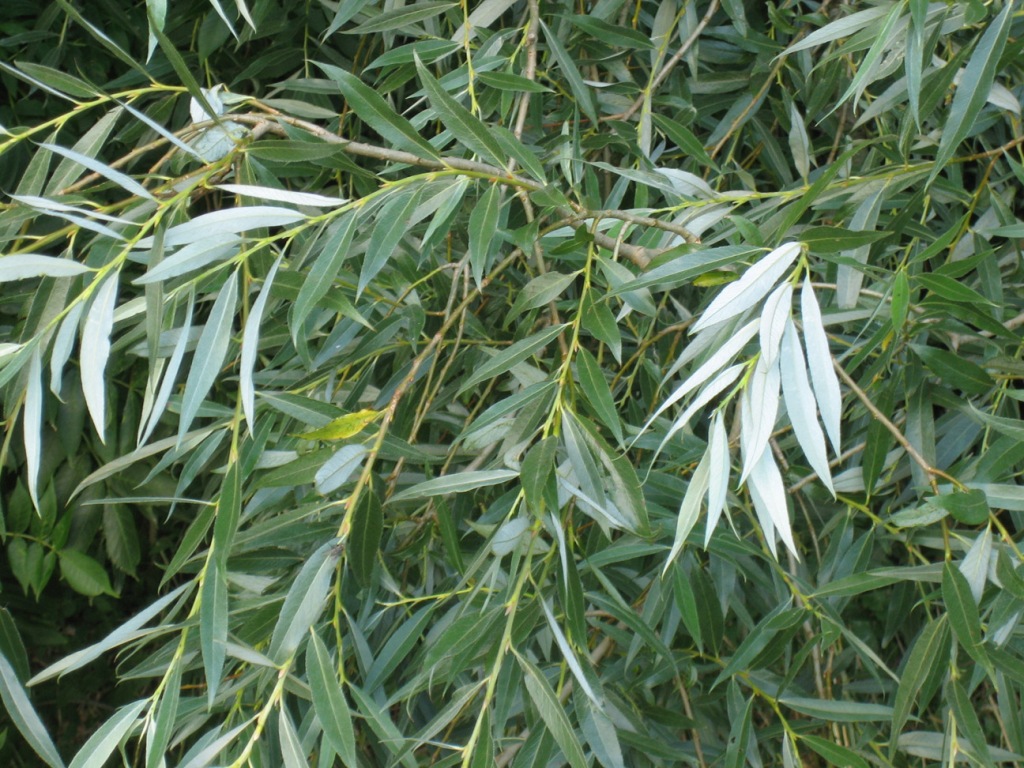
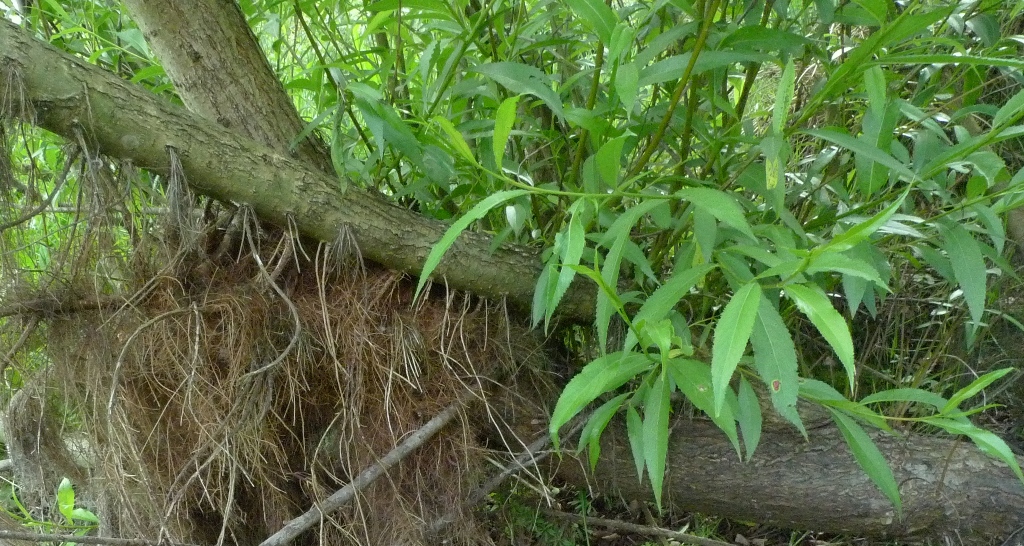
Willow (Salix alba & S. fragilis)
Willow bark contains salicin and other asprin-like compounds. It is used to treat pain and inflammation, but does not have the stomach-irritating or blood-thinning effects of asperin. Willow helps to lower fevers, and can be used as a gentle pain relieve for headaches, arthretis, gout, rheumatism, muscle aches and lower back pain.
Willow is also one of Dr. Bach’s original flower essences:
Used to treat: Resentful, self-pity and bitterness.
Encourages: Ability to forgive and forget. Back in control.
4) Betulaceae or The Birch & Alder family (incl. Corylaceae or Hazel & Hornbeam family):
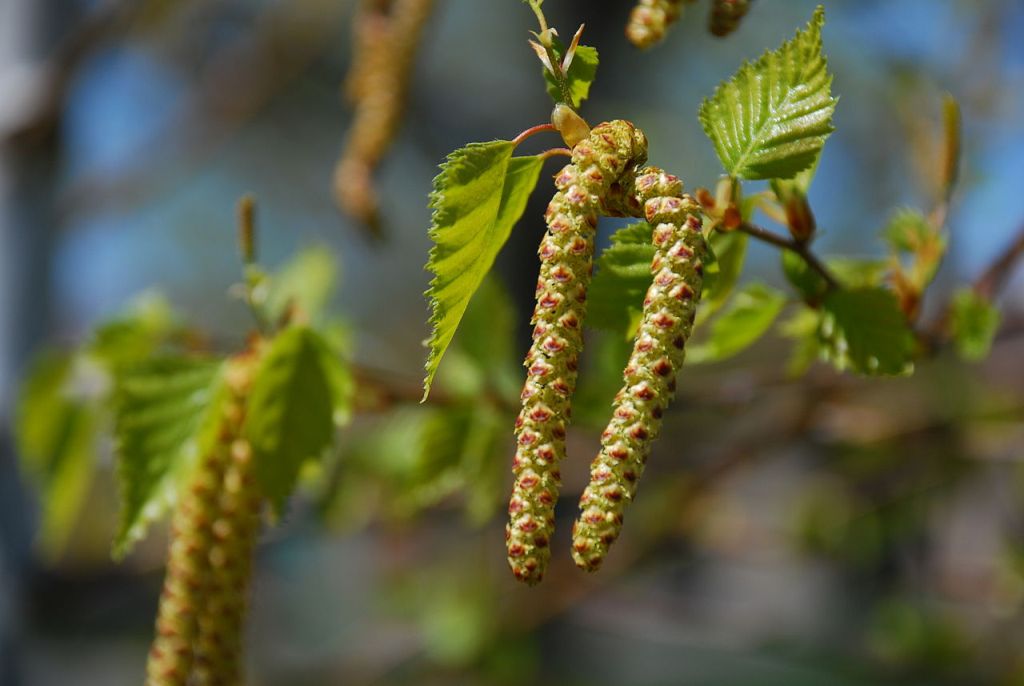
Birch (Betula spp.)
Birch is an excellent tonic and detoxifier, mainly working on the urinary system to remove waste products, as in kidney or bladder stone, gravel, gout and rheumatism. It reduces fluid retention and swellings, and clears up many skin problems.
5) Fagaceae or the Beech, Oak and Chestnut Family:
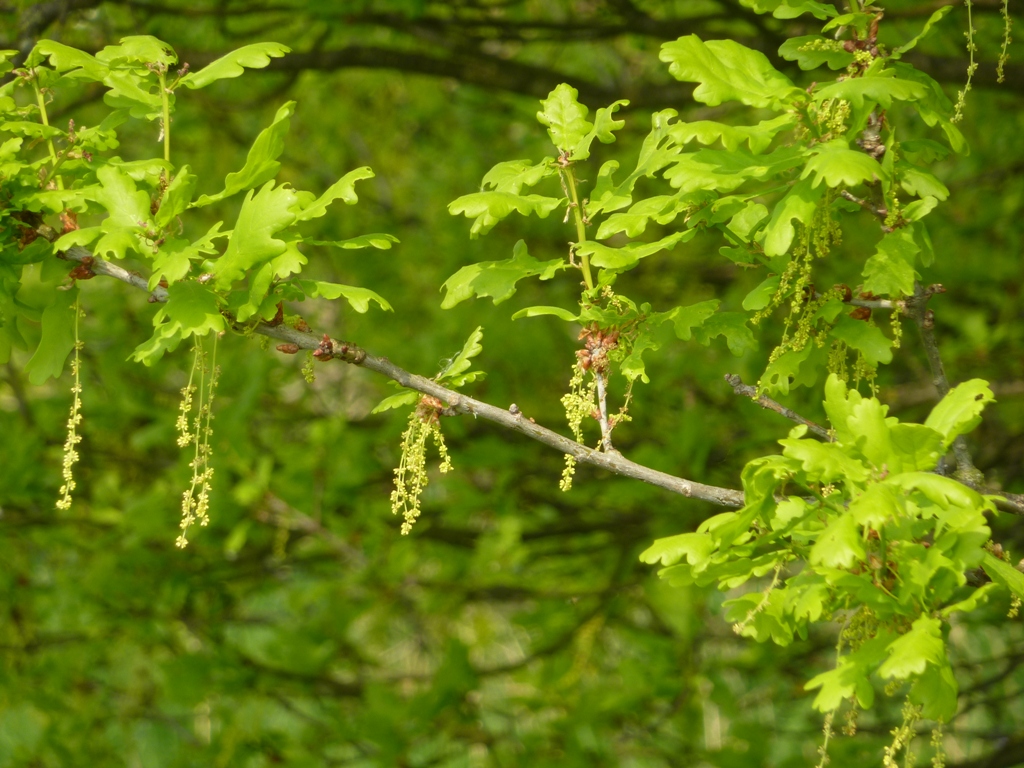
Oak (Quercus robur, Q. petraea)
The Oak, in terms of hedgerow medicines still has its uses, mainly of the bark, leaves and acorns rather than the galls of earlier times.
Oak is also one of Dr. Bach’s original flower essences:
Used to Treat: Those who unrealistically never give up. Keep going when you need to rest.
Encourages: Admit limitations.
Strength.
Cannabaceae or the Cannabis and Hop family:
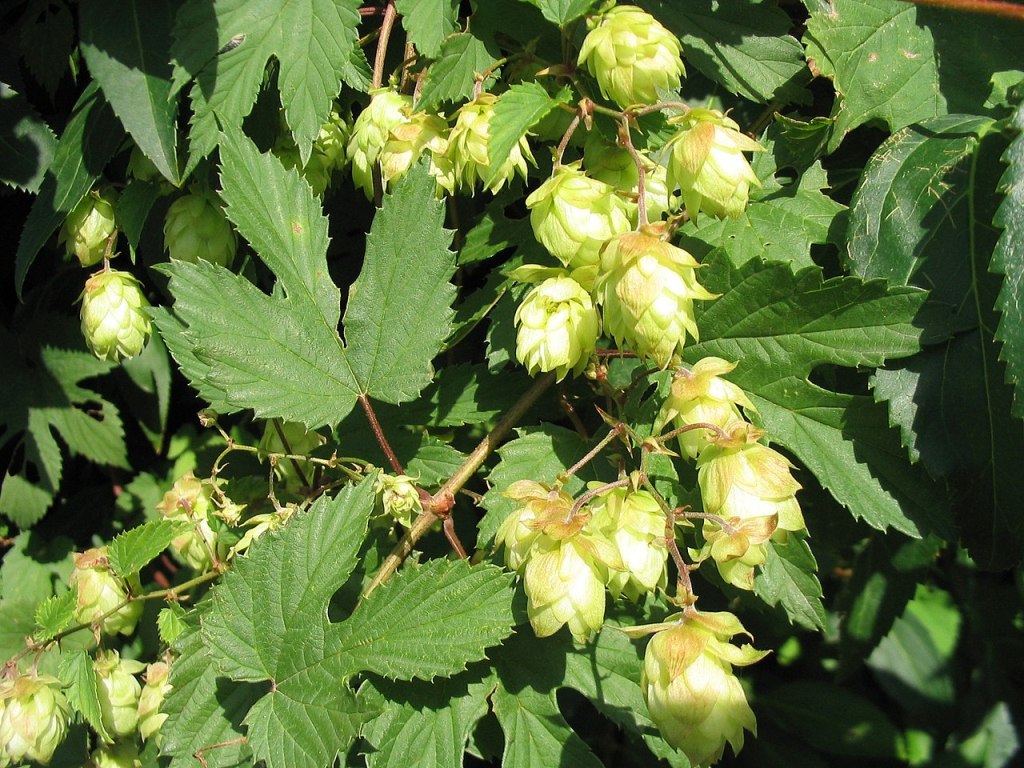
8) Hops (Humulus lupulus)
A bitter sedative herb best knwn for its role in brewing and as an aid to sleep, hops also stimulate digestion and affects hormones.
Urticaceae or the Nettle family:
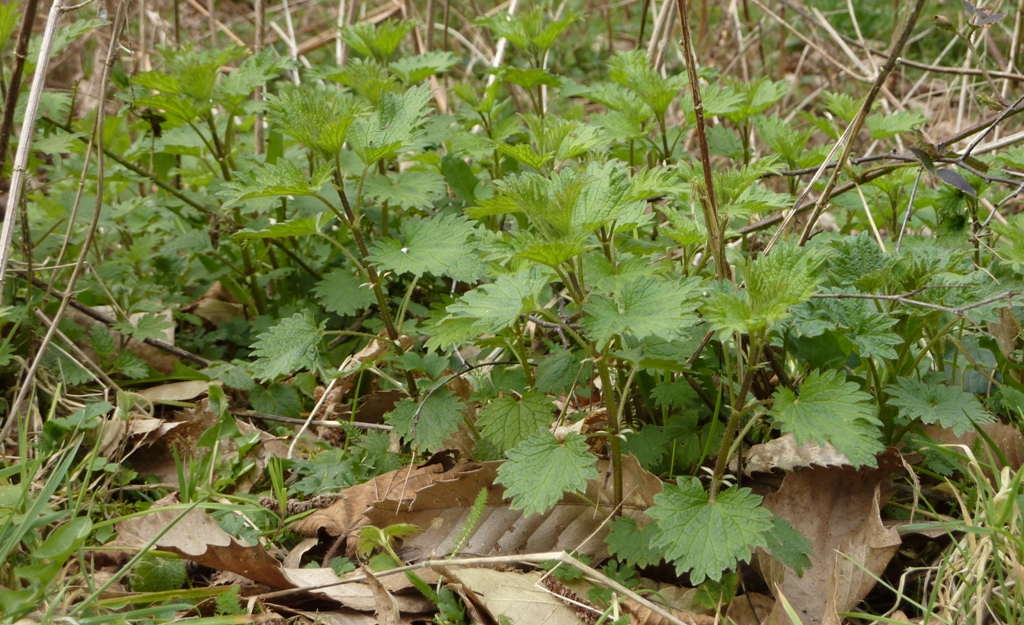
9) (Stinging) Nettle (Urtica dioica)
Nettles are one of the most useful op plants, despite their protective sting!
The young tops are delicious and nutritious, a natural vitamin and mineral supplement. Medicinally the leaves, seeds and roots are used to treat a wide range of conditions including anaemia, arthritis, asthma, burns, eczema, infections, inflammations, kidney stones, prostate enlargement, rheumatism and urinary problems.
Nettles can also be used to make rope, nets, a linen-like cloth and paper, a dye, insect repellant and green manure.
11) Polygonaceae or the Dock and Sorrel family:
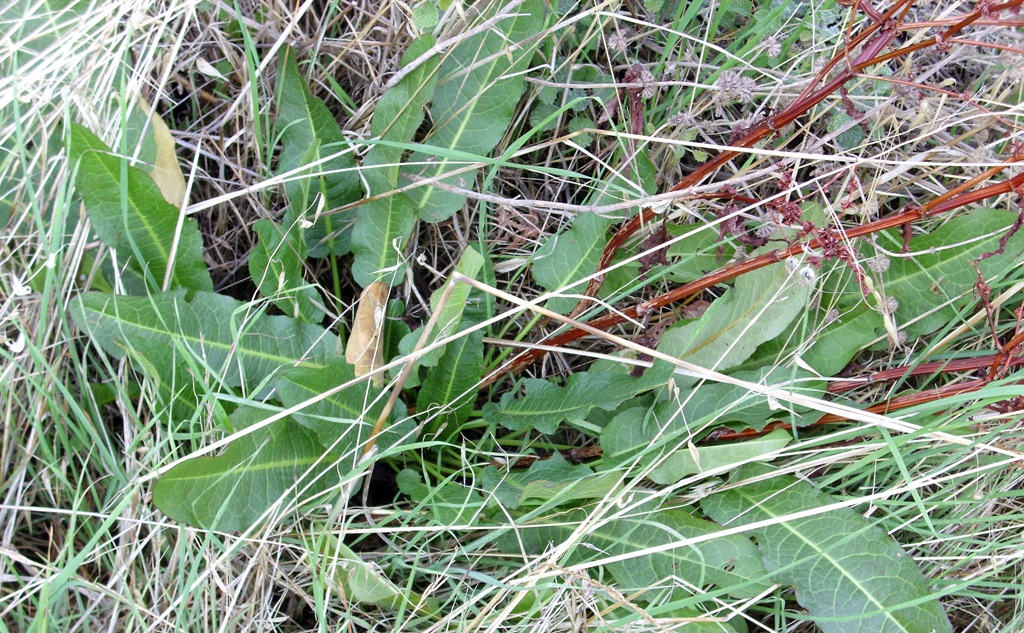
Curled dock (Rumex crispus)
The two common docks are among the official ‘injurious weeds’ in Britain, but curled dock has long-recocnised redeeming qualities as a detoxifying liver and bowel herb, a laxative and a blood cleanser. The root is effective for many chronic skin conditions, including acne and boils,eczema and sunburn, not forgetting the most use of dock leaves for relieving the burning caused by nettle stings.
14) Caryophyllaceae or the Pink and Carnation family:
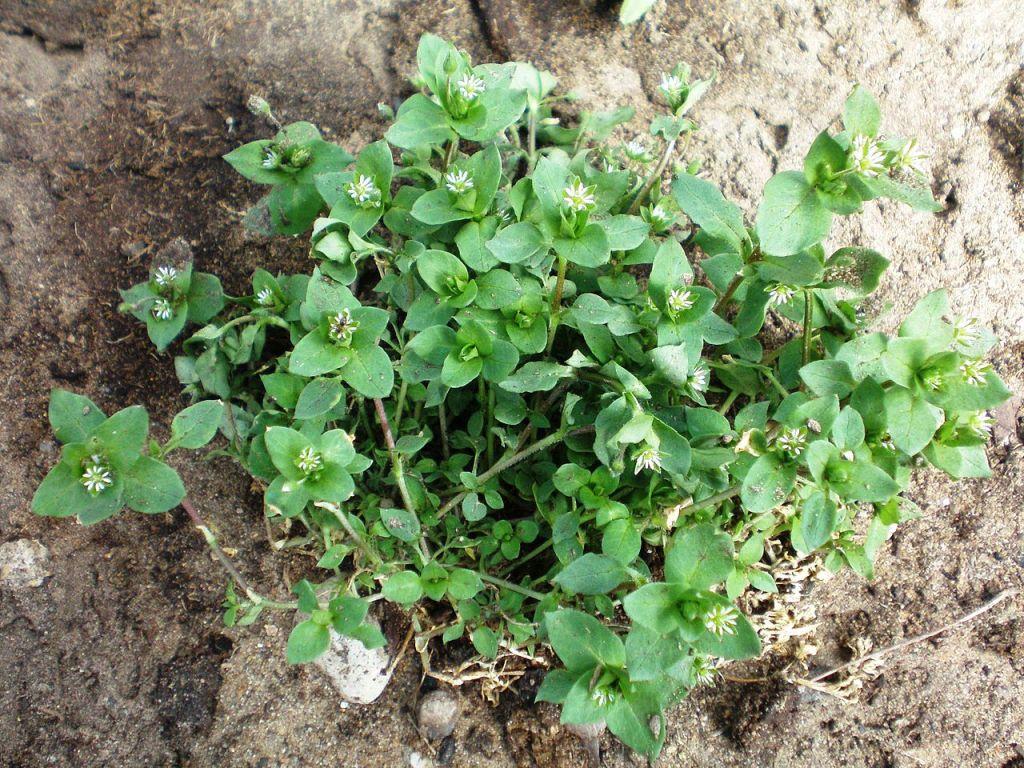
Chickweed (Stellaria media)
This is the best-known herbal remedy for itchy skin and hot skin inflammations of various types. Chickweed is a soothing nutritious and cooling herb, with a reputation for clearing stubborn, long-lasting bodily conditions.
19) Papaveraceae & 19 A: Fumariaceae family or the Poppy & Fumitory family:
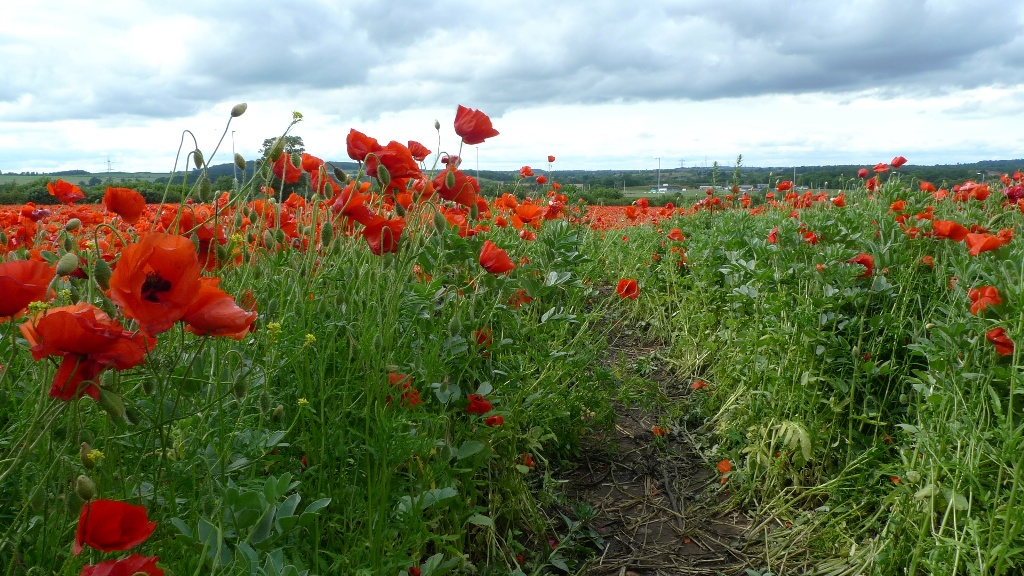
Red poppy (Papaver rhoeas)
Red Poppy is soothing and sedative, relieves pain and helps sleep, but without the narcotic effects of its relative, the opium poppy.
20) Brassicaceae (Cruciferae) or the Cabbage & Mustard family:
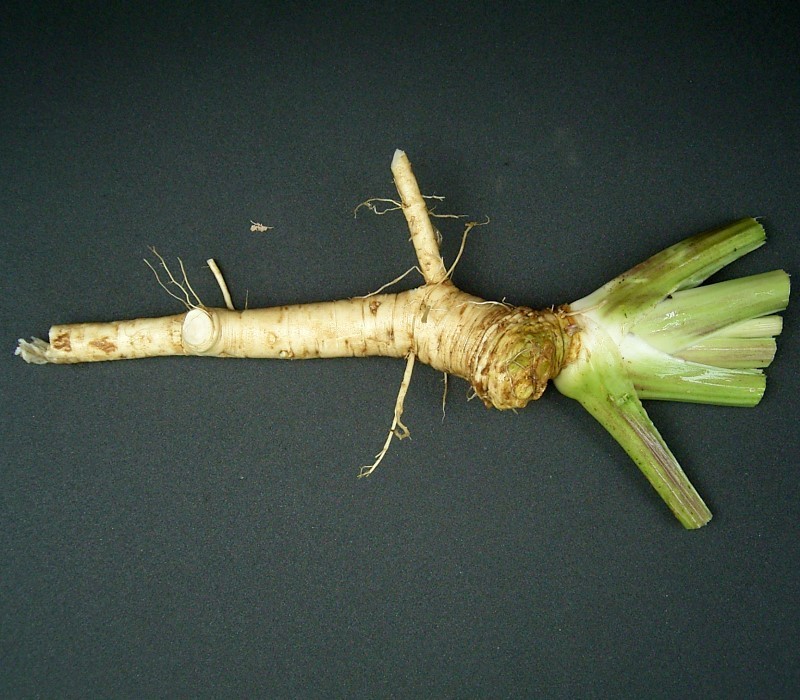
Horseradish (Armoracia rusticana)
Horseradish root is hot and pungent, and therefore stimulates digestion, is an active eliminator of the waste products of fevers and colds, clears the sinuses and is warming for theumatism and muscle aches.
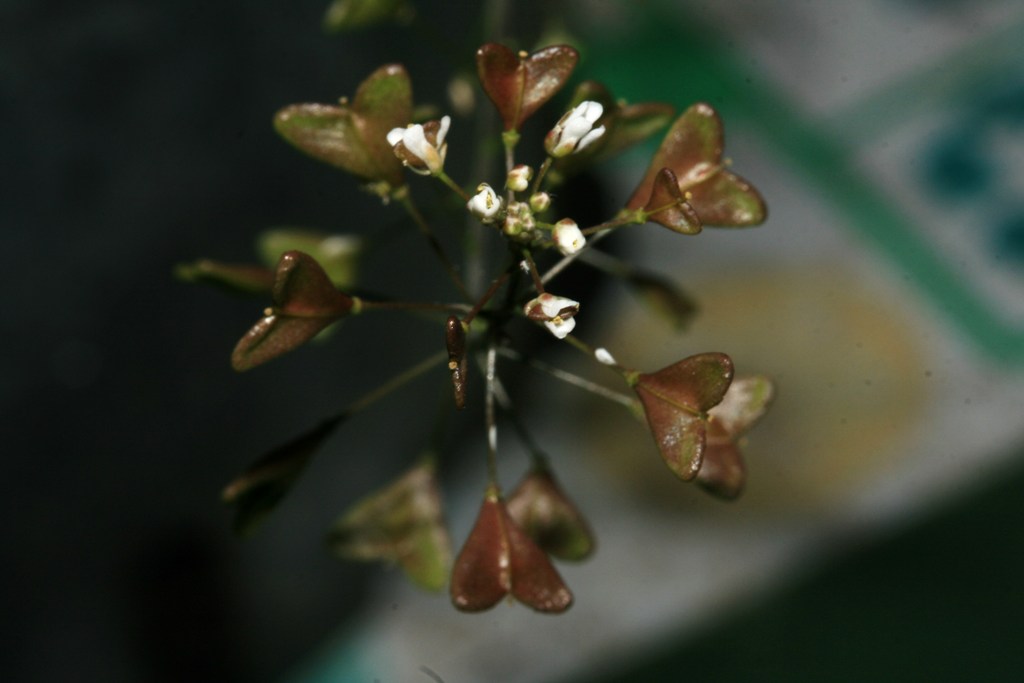
Shepherd’s purse (Capsella bursa-pastoris)
Shepard’s purse stops bleeding of all sorts from nosebleeds to blood in the urine. It was used in First World War battles to staunch bleeding from wounds when ergot, an effective but more dangerous remedy, was not available.
Shepard’s purse also has the ability to correct prolapses, especially of the uterus but also of the blader, moving the organs back into their correct position.
25) Rosaceae or the Rose family:
Agrimony (Agrimonia eupatoria)
Agrimony stops bleeding of all sorts. It helps relieve pain too, and has a long tradition as a wound herb as well as for treating liver, digestive and urinary tract problems.
Agrimony tightens and tones the tissues, and, in a seeming contadiction, also relaxes tension, both physical ans mental. This is the herb for when you are feeling frazled, when stress and tension or pain are causing torment.
It is one of the 38 flower essences by Dr. Edward Bach:
Used to Treat: Hiding troubles behind humour
Encourages: Self-acceptance and inner joy. Openness.
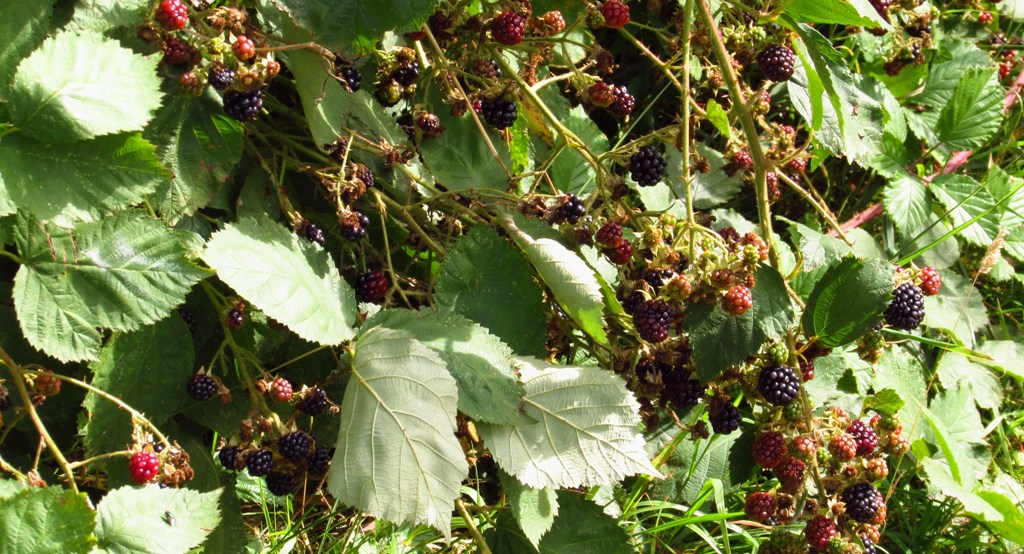
Blackberry (Rubus fruticosus)
This is one of the most familar hedgerow plants!
The berries and leaves offer medicinal help with general health, diarrhoea, mouth ulcers, gingivitis, sore throats, colds and flu and fevers.
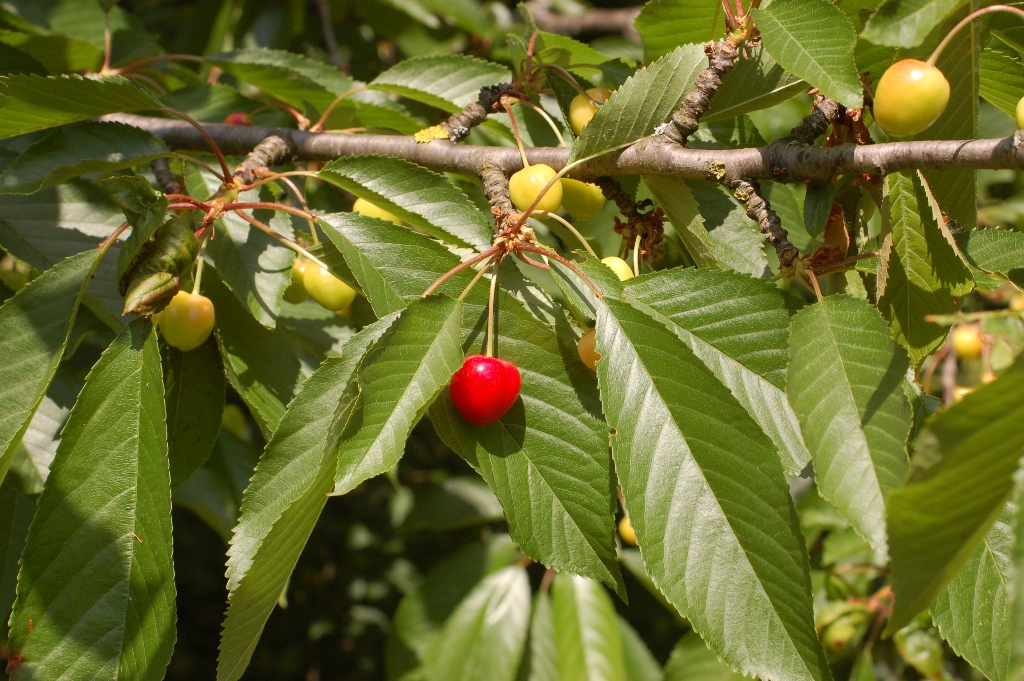
Cherry (Prunus avium)
Cherries are not only delicious to eat but are also good for your gout or anthritis. The fruit stalks and inner bark have medicinal virtues too, for treating dry coughs, sore throats or bronchitis.
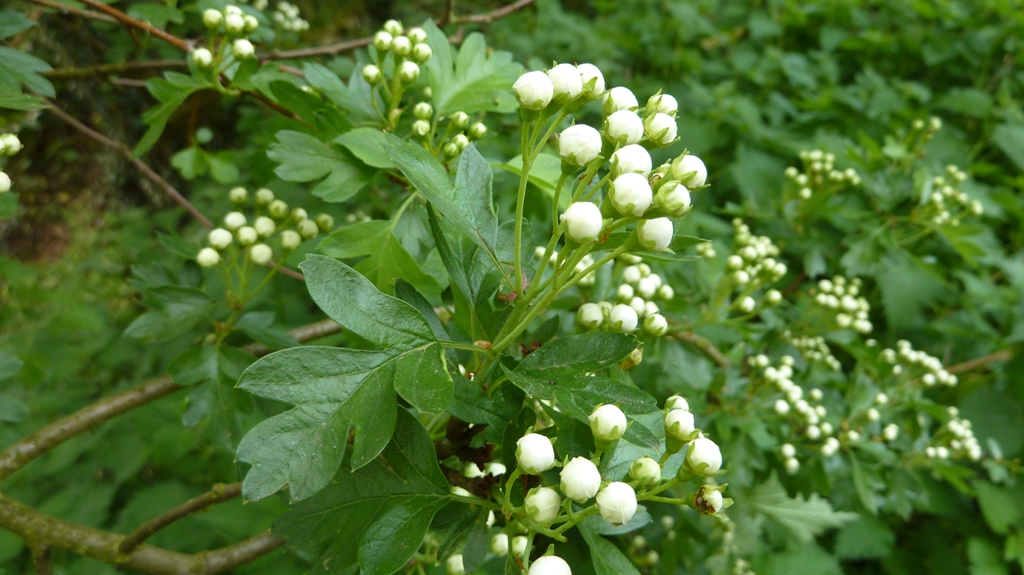
Crataegus monogyna or Hawthorn in Flower and Fruit (by Matt Summers)
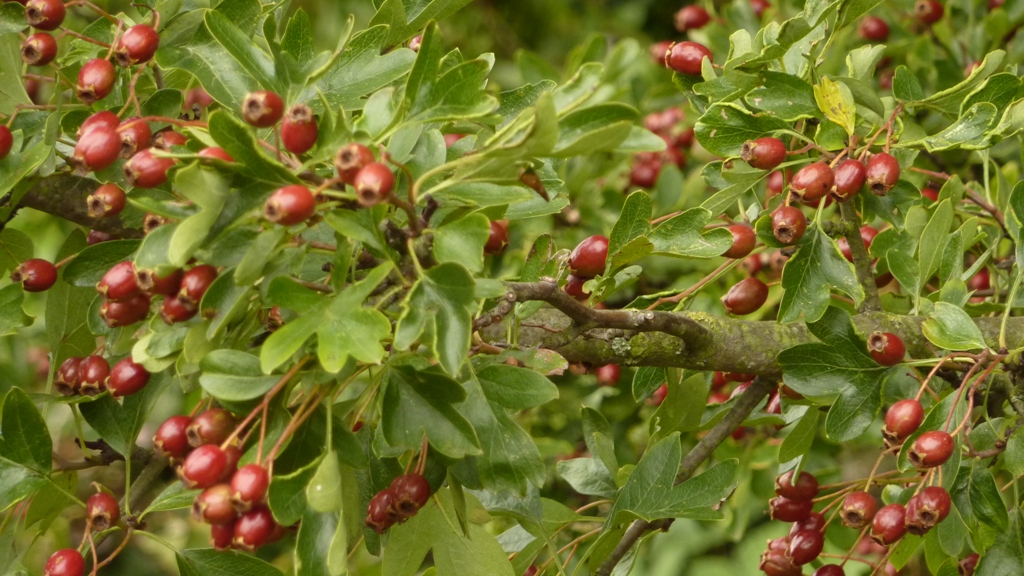
Hawthorn (Crataegus monogyna & C. laevigata)
Hawthorn is a superb heart and circulatory tonic, protecting and strengthening the heart muscle and its blood supply.
Hawthorn also effects the emotional side of what we think of as ‘heart’, by calming and reducing anxiety, helping with bad dreams and insomnia, and smoothing menopausal mood swings.
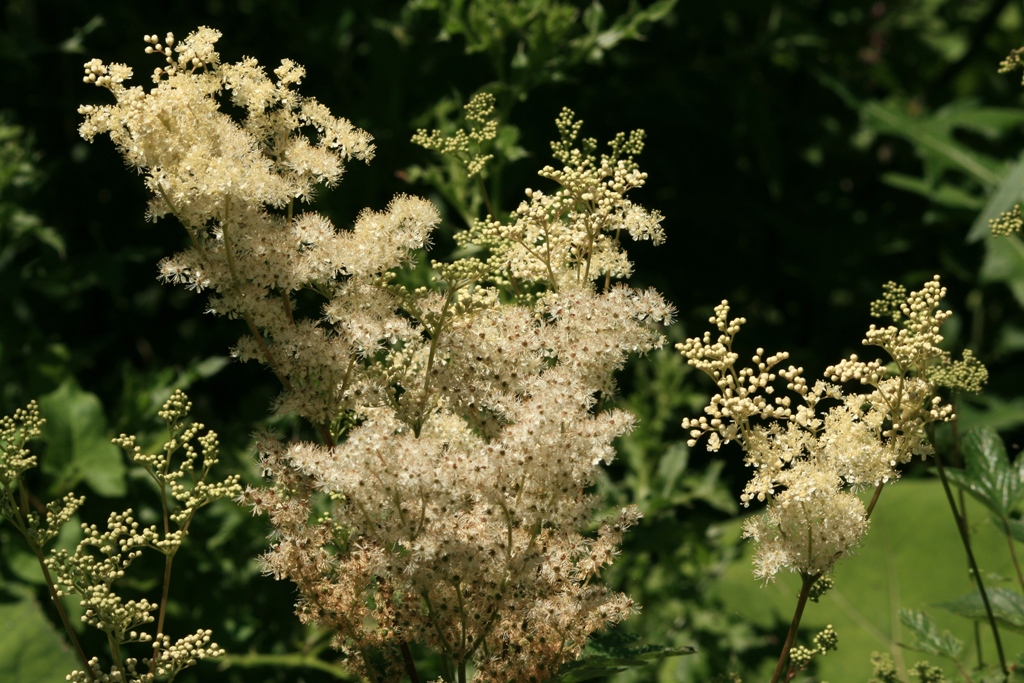
Meadowsweet (Filipendula ulmaria)
This is the number one herb for treating stomach acid problems, while also benefiting the joints and urinary system. Meadowsweet is effective for fevers and flu, diarrhoea, headaches and pain relief generally. It well earns its name ‘herbal aspirin’.
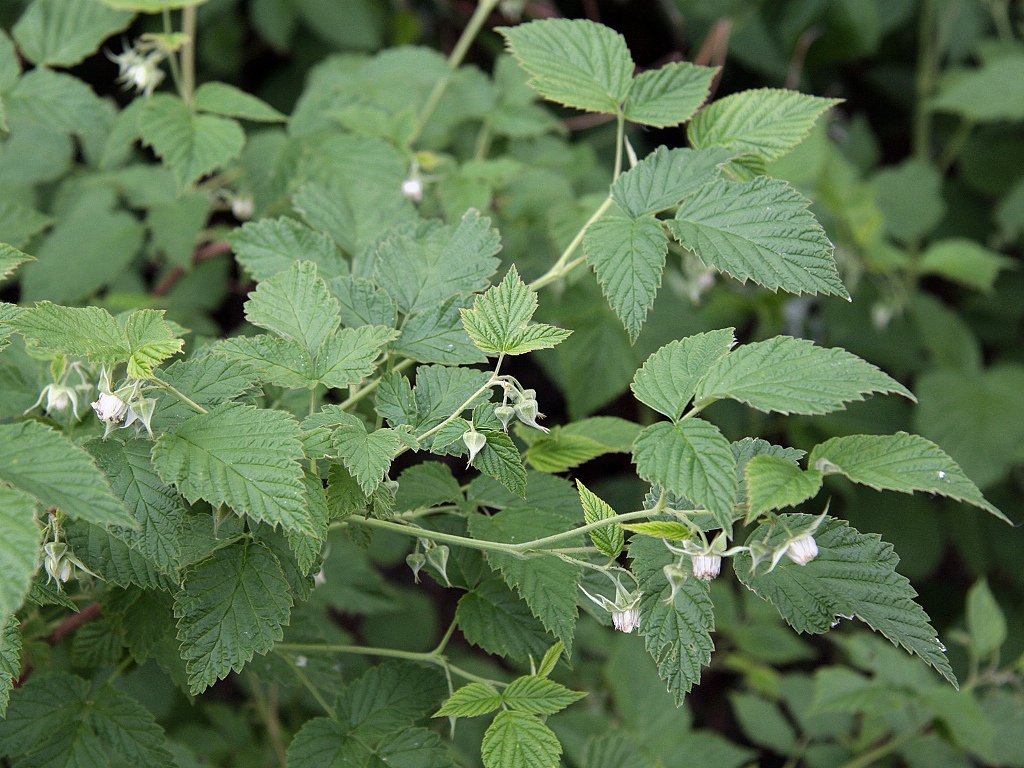
Raspberry (Rubus idaeus)
Raspberry leaf tea is well known for strengthening the uterus prior to childbirth and for relieving painful periods. It is also an effective and soothing remedy for flu and fevers, helping reduce the aches and pains that go with them.
The tea is a good source of calcium and other minerals, making it a health-enhancing alternative to regular tea.
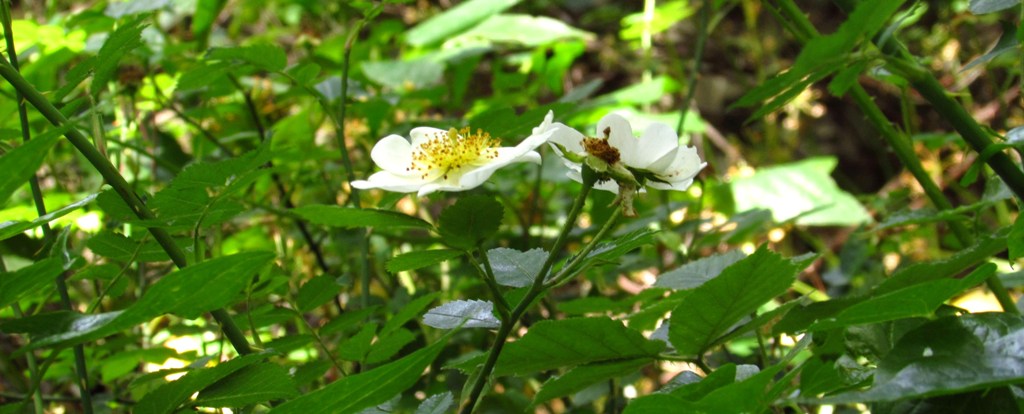
Wild Rose (Rosa spp.)
Rose is the plant of love, the petals being the basis of the perfume industry. Herbally, it supports the immune system, is a good eliminator and is cooling to the body.
Wild Rose is also one of Dr. Bach’s original flower essences:
Used to Treat: Resigned; apathetic. Disinterested.
Encourages: Spirit of joy.
Enthusiasm.
26) Leguminosae or the Pea-Flower family:
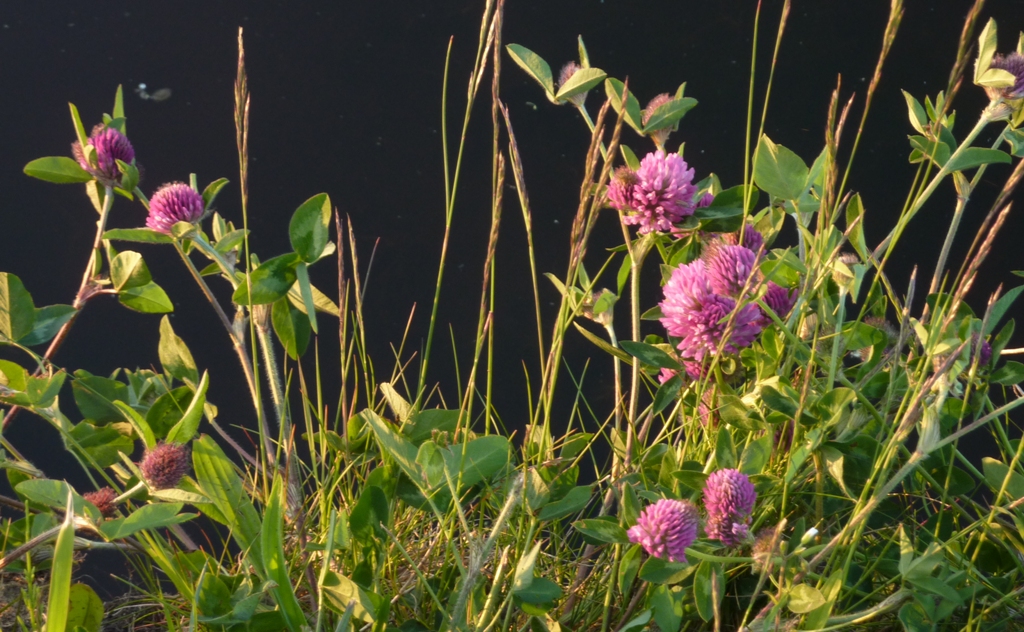
Red Clover (Trifolium pratense)
Being part of the Pea-Flower family this is an important nitrogen-fixing forage crop.
Red clover has also a long history as a blood cleanser. It is used for chronic constipation, skin complaints, chronic degenerative diseases and bronchitis. It helps balance hormone levels during the menopause, relieving symptoms such as hot-glushes.
34) Hippocastanaceae or the Horse Chestnut family:
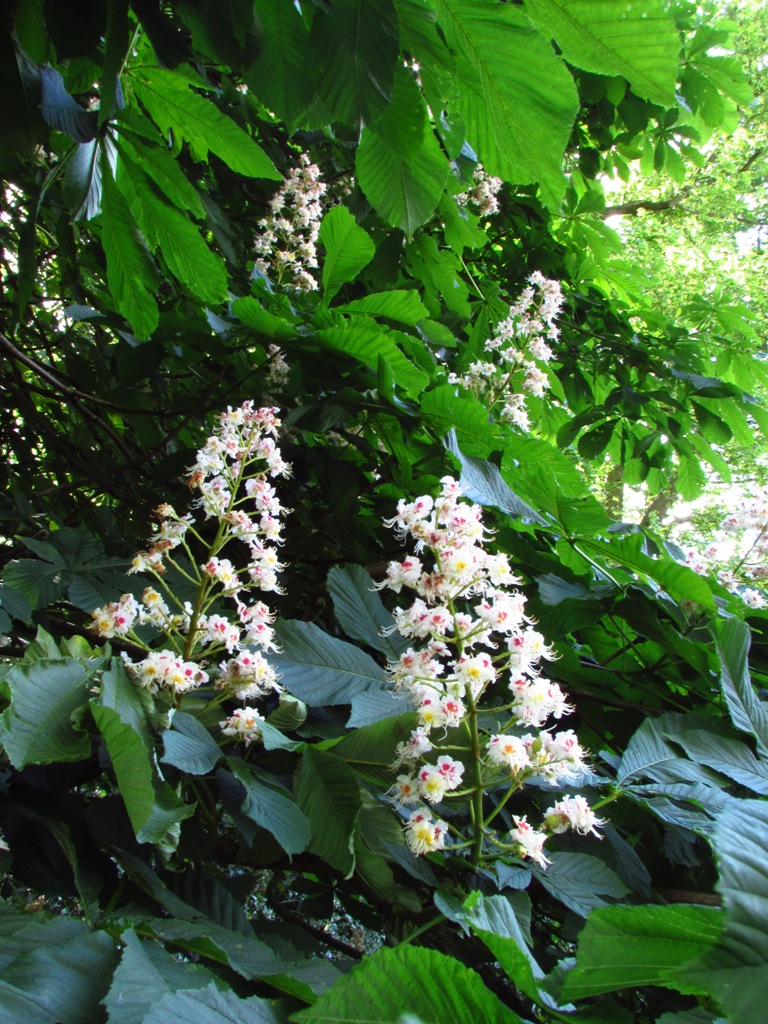
Horse Chestnut (Aesculus hippocastanum)
Horse Chestnut supports weakened veins, as in varicose veins, haemorrhoids and capillary fragility.
It is also used for two Bach Flower Essences:
Chestnut bud used to Treat: Repetition of mistakes and experiences; inability to learn from mistakes.
Chestnut bud encourages: Self-acceptance and inner joy. Openness.
White Chestnut used to Treat: Obsessive and worrying thoughts that seem impossible to control.
White Chestnut encourages: Peace of mind and tranquility.
39) Tiliaceae (now Malvaceae) or the Linden/Lime tree family:
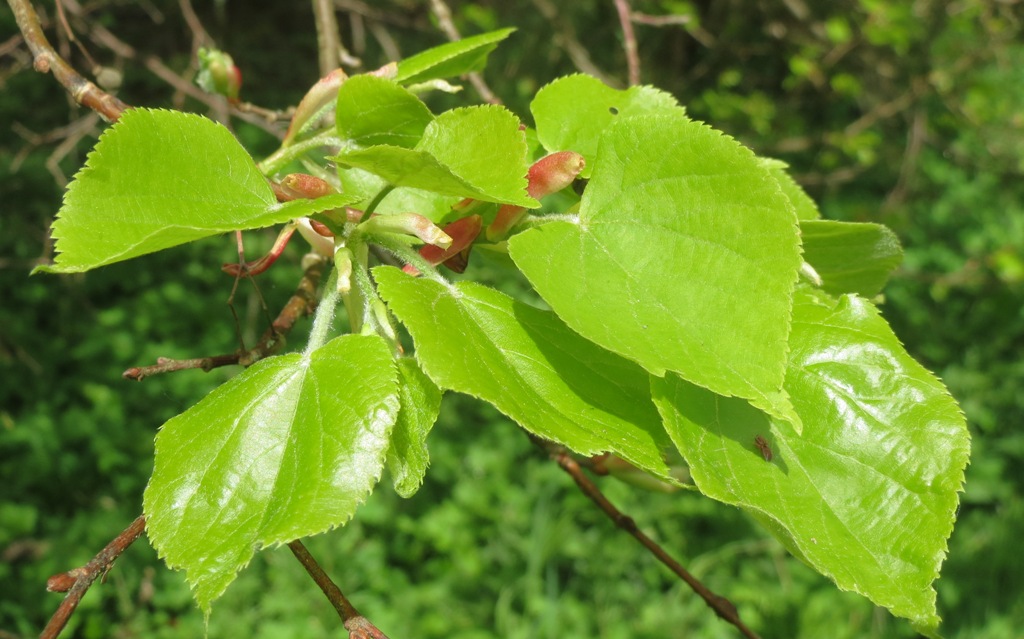
Lime, Linden (Tilia spp.)
This is the perfect remedy for stress, tension and overwork. Lime-blossom helps us relax and sleep well. It soothes irritation, boosts the immune sytem and protects the heart by reducing cholestrol levels and relaxing the arteries.
40) Malvaceae or the Mallow family:
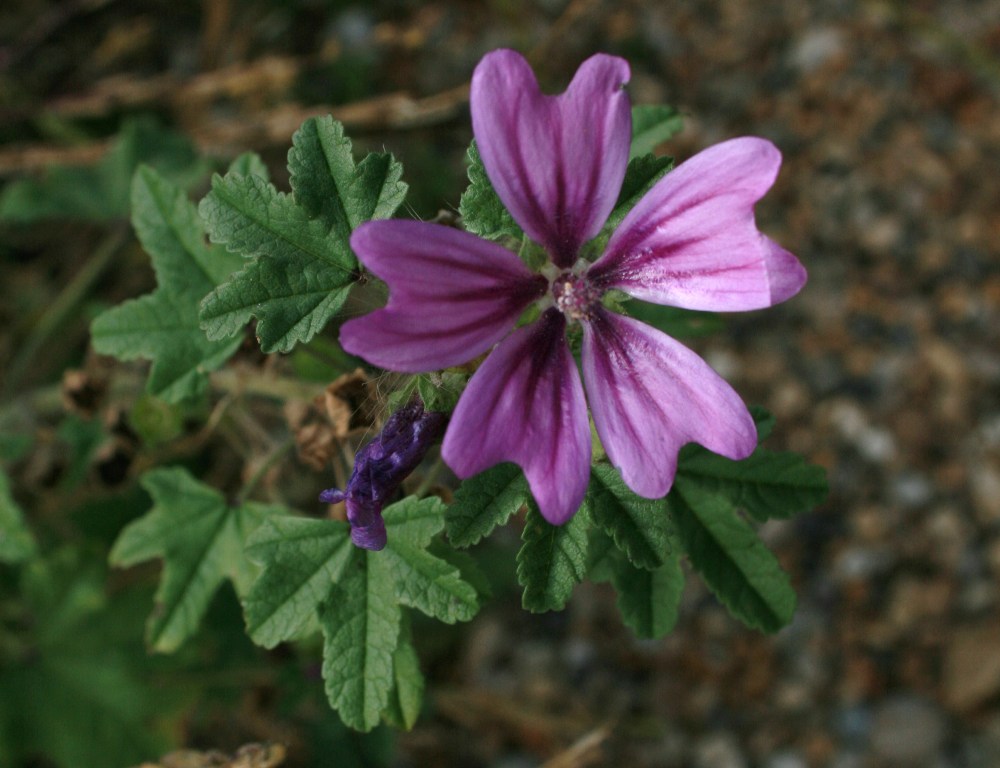
Mallow (Malva sylvestris)
Mallow can be used as a poultice against swellings, insect bites, boils & abscesses and cuts. As a tea it can be drunk for indigestion, IBS, dry and sore throat, a dry cough and against mild constipation.
43) Guttiferae (Clusiaceae, Hypericaceae) or the St John’s Wort family:
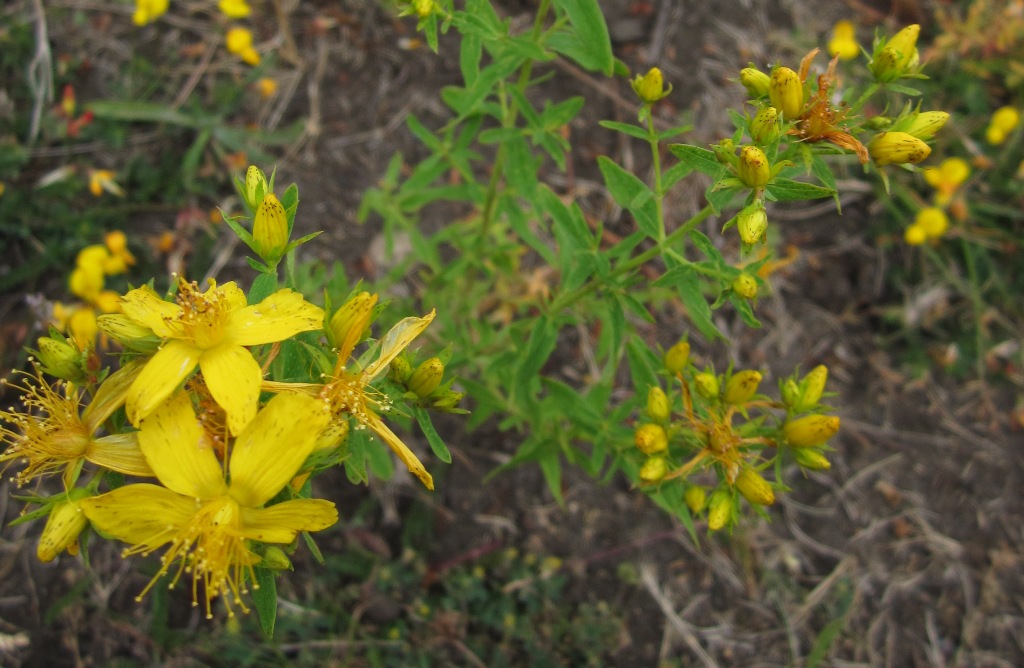
St John’s wort (Hypericum perforatum)
St John’s wort has become well known as a herb for treating depression and SAD. It is also an antiseptic wound herb of ancient repute. It strengthens the nervous system and the digestion, protects the liver, is antiviral and reduces pain; it is a plant for support through life-cycle changes.
48) Onagraceae or the Willow Herb family:
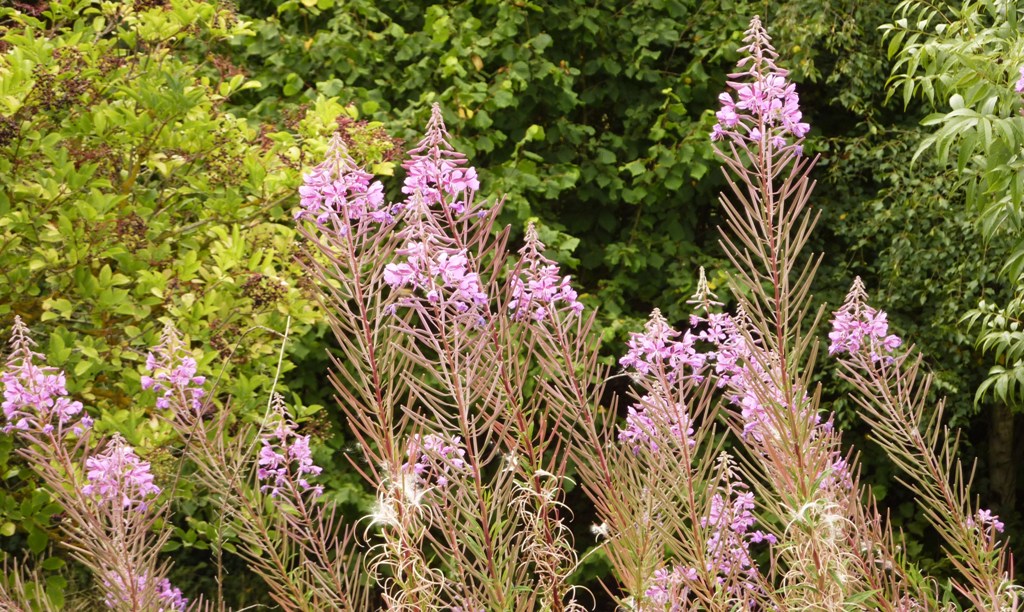
Rosebay willowherb (Chamaenerion angustifolium)
This plant has soothing, astringent and tonic action, which is wonderful for all sorts of intestinal irritation, and it makes a good mouthwash.
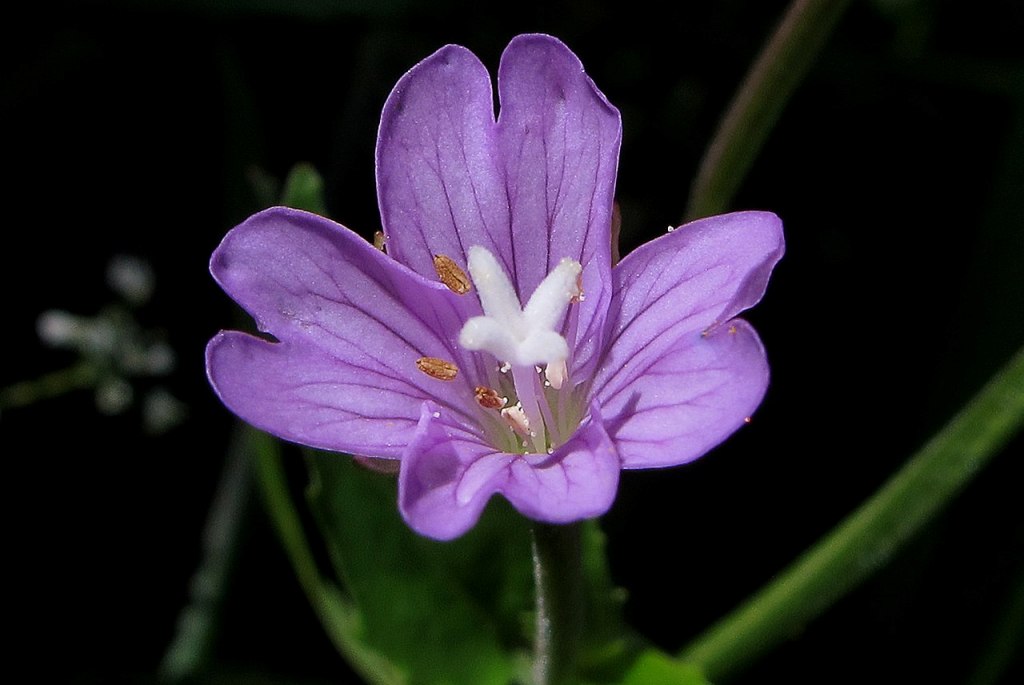
Willowherb (Epilobium spp.)
The small flowered willowherbs are a specific remedy for prostate problems, including benign prostaye hyperplasia (BHP). Plants in this group help shrink the tissues, arrest cell prolifration and normalise urinary function.
It is also effective for a wide range of bladder and urinary problems, with the astringent and diuretic action serving to tone and detoxify the urinary tract.
52) Apiaceae (Umbelliferae) or Carrot /Parsley family:
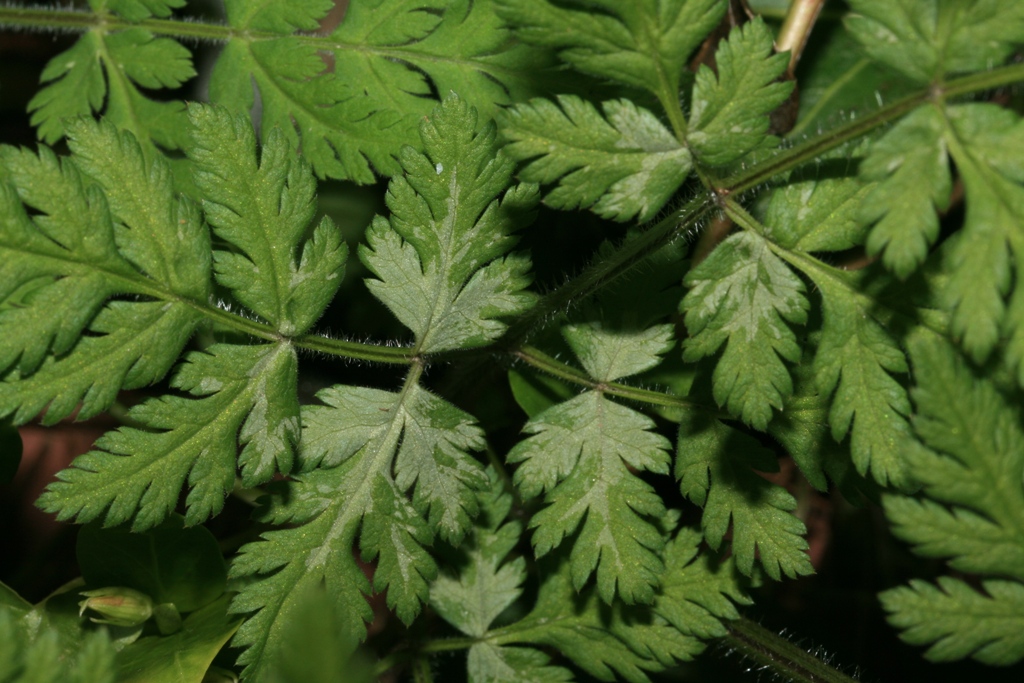
Myrrhis odorata or Sweet cicely foliage and fruit. (By Matt Summers)
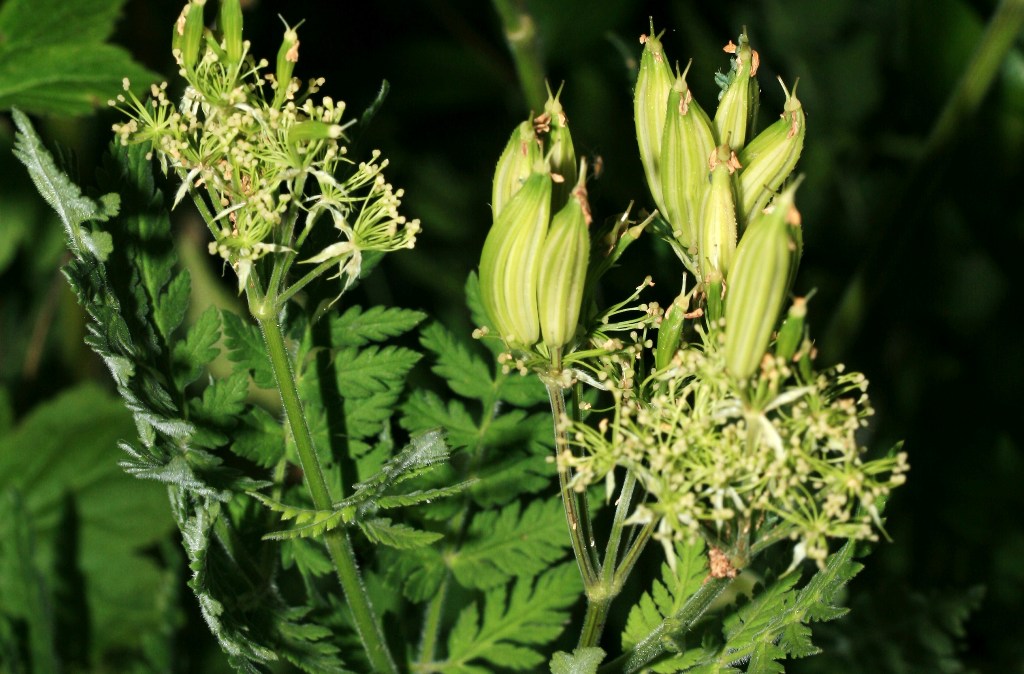
Sweet cicely (Myrrhis odorata)
Traditionally it is cooked with acid fruits in order to reduce the amount of sugar being used.
Sweet cicely is a herbal tonic that restores energy, lifts the spirits and settles the digestion.
54) Ericaceae or the Heath/Heather family:
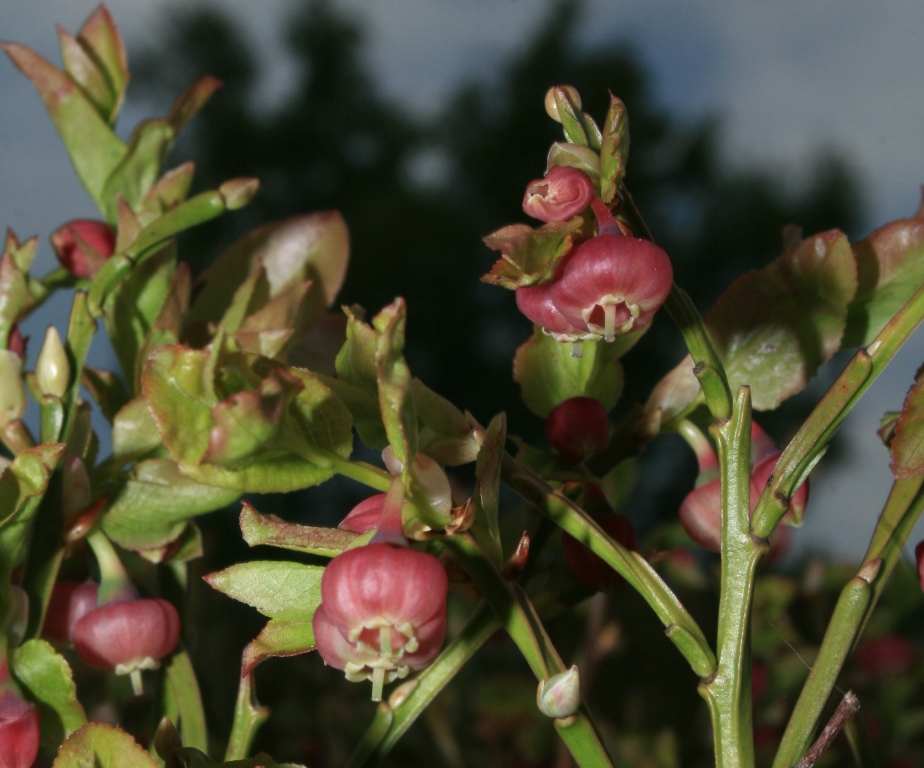
Bilberry (Vaccinium myrtillus)
Billberries are one of the best herbs for the eyes and eyesight. They also strengthen the veins and capillaries, so are used for fragile and varicose veins.
The leaves are healing too, being effective for urinary tract infections and helping to regulate blood sugar levels.
61) Rubiaceae or the Madder/Bedstraw family:
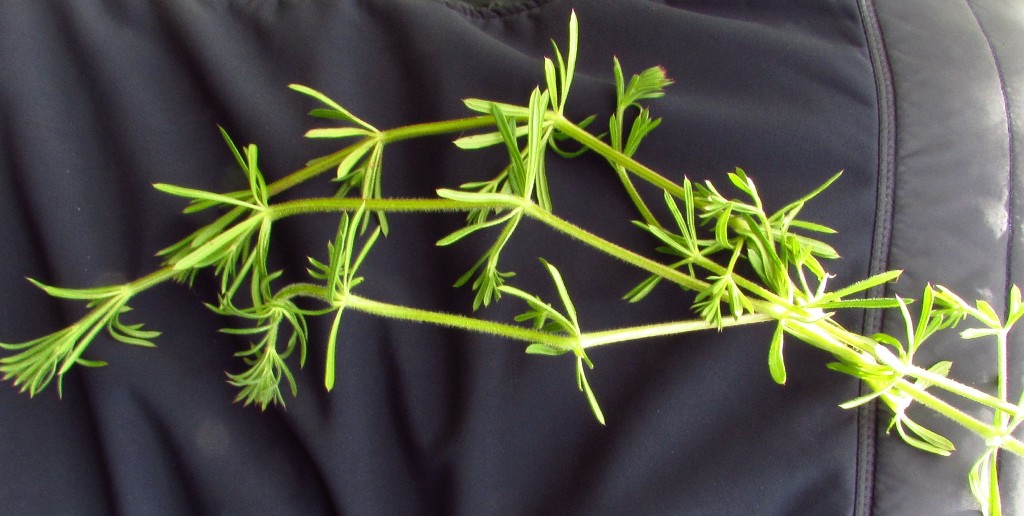
Cleavers (Galium aparine)
Cleaver is a wonderfully gentle lymphatic cleanser and a fantastic spring tonic, helping clean up of our system after winter. It soothes irritated membranes of the urinary tract and promotes urine flow, and is useful for many mouth and throat problems.
64) Boraginaceae or the Borage/Forget-Me-Not family:
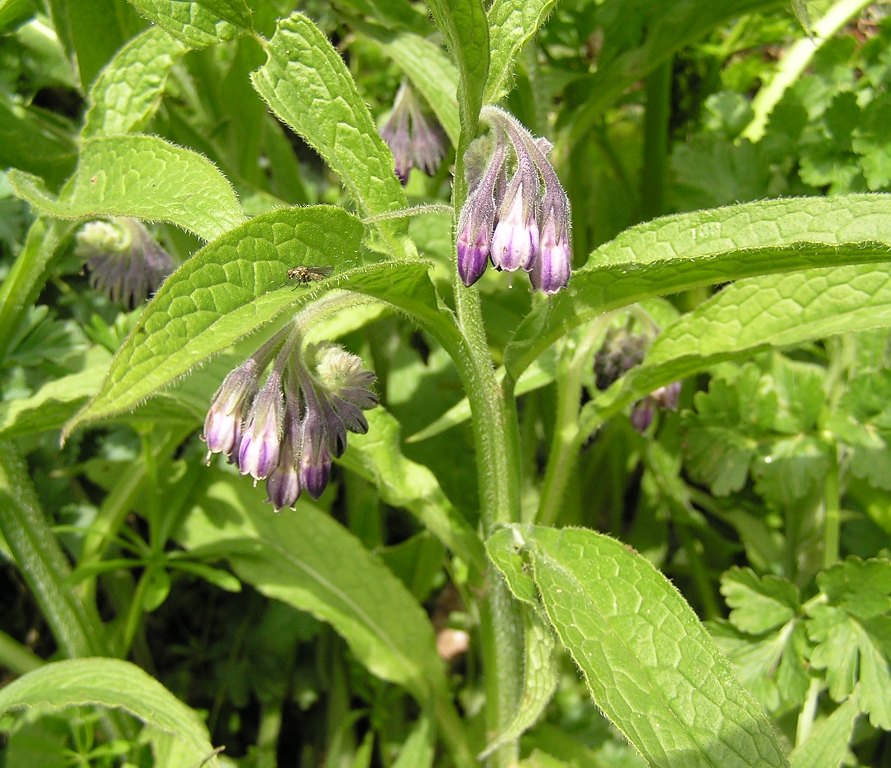
Comfrey (Symphytum officinale)
Comfrey can speed the healing of wounds. Applied as a poultice or ointment, it can be used to treat bruises, dislocations and sprains.
65) Verbenaceae or the Verbena family:
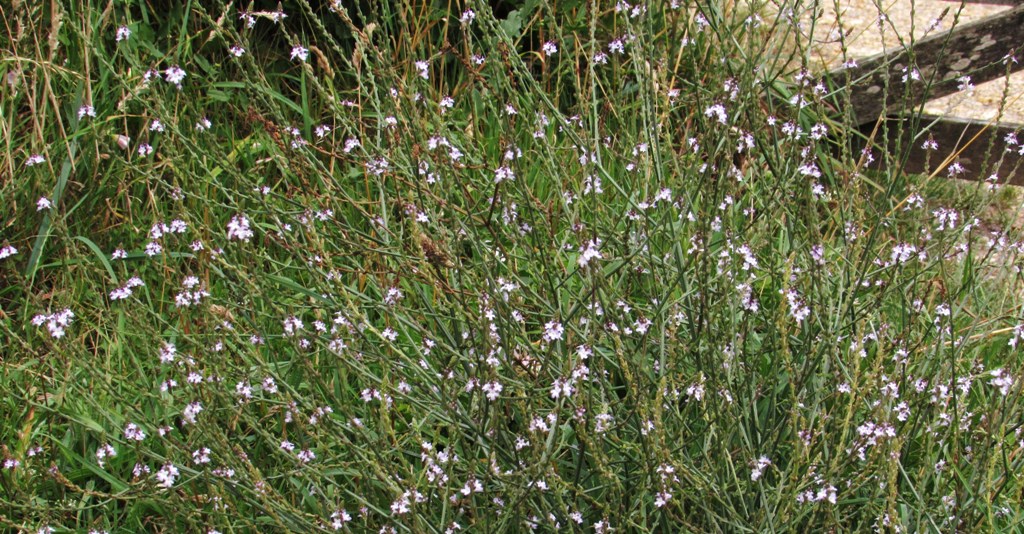
Vervain (Verbena officinalis)
Vervain restores and calms the nervous system, is a digestive tonic and alleviates headaches. It is used for premenstrual tension, menopausal hot flushes, fevers, gallstones, jaundice, asthma, insomnia, anxiety, stress and tension.
It is one of the 38 flower essences by Dr. Edward Bach:
Used to Treat: People with fixed opinions; need to convert those around them, over enthusiastic.
Encourages: Peace and tranquility. Unwind/relax.
66) Lamiaceae (Labiatae) or the Mint or Thyme family:
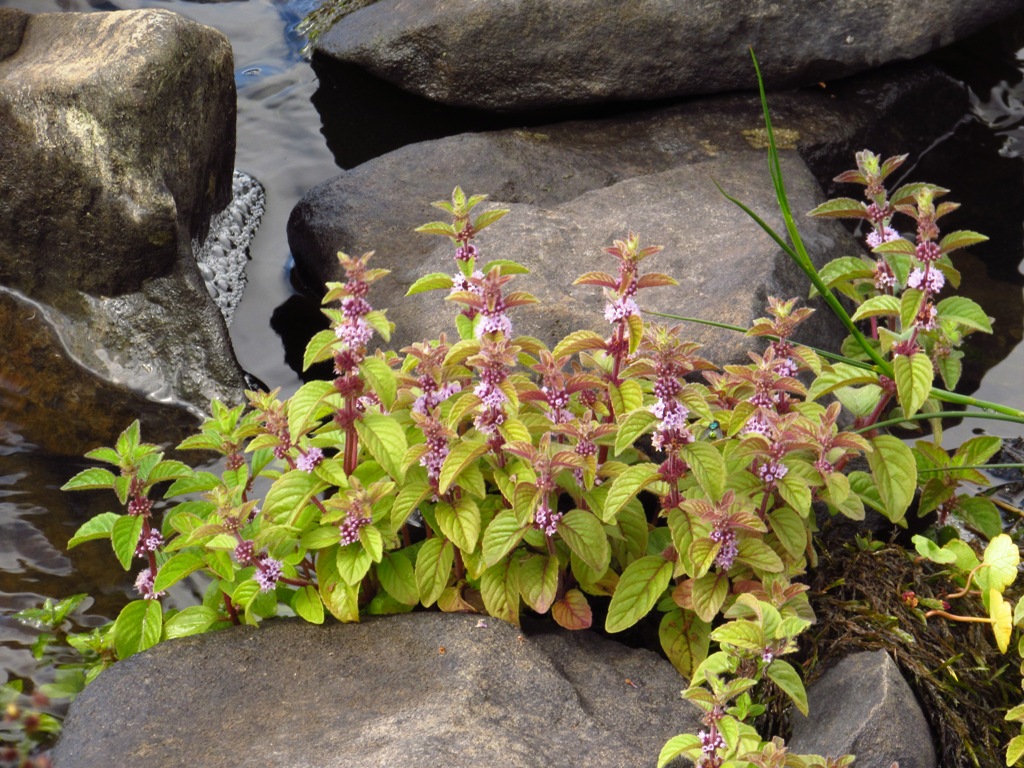
Mint (Mentha spp.)
Mint is wonderful for the digestion, as a tea, in food and medicinally. It also relieves nausea, spasms and gas, and offers the benefits of being both warming and cooling to the body.
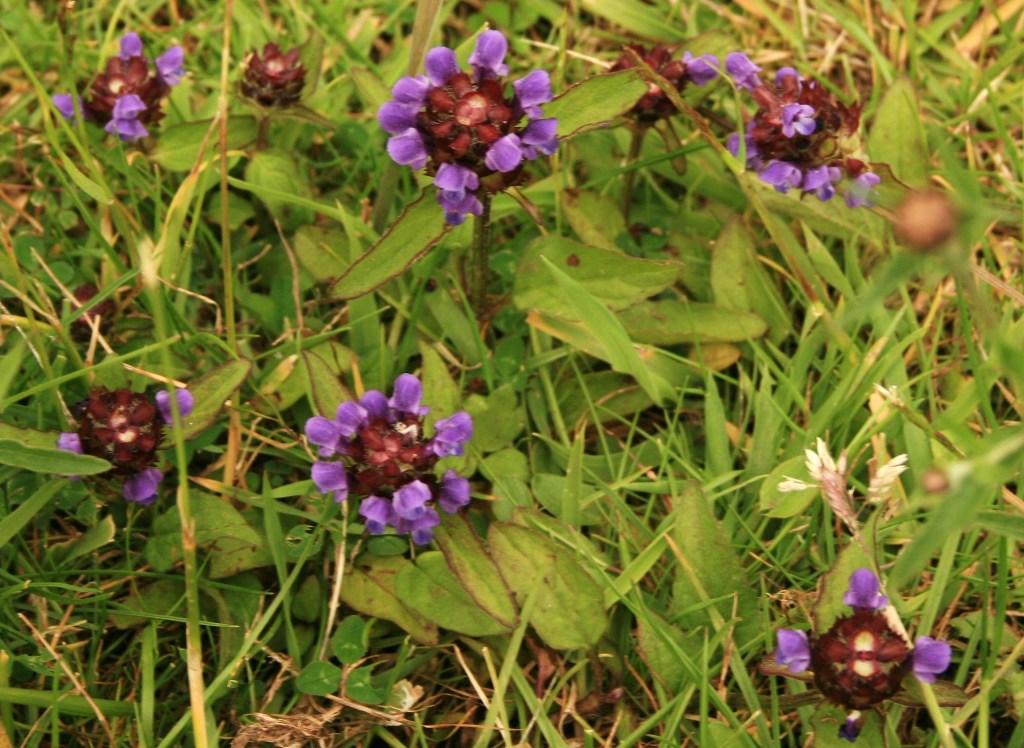
Self-heal (Prunella vulgaris)
Self-heal has gained recent respect for its antiviral qualities. Effective for feverish colds and flu, it has been proposed for treating herpes and AIDS, and is an underrated liver, gallbladder and thyroid remedy.
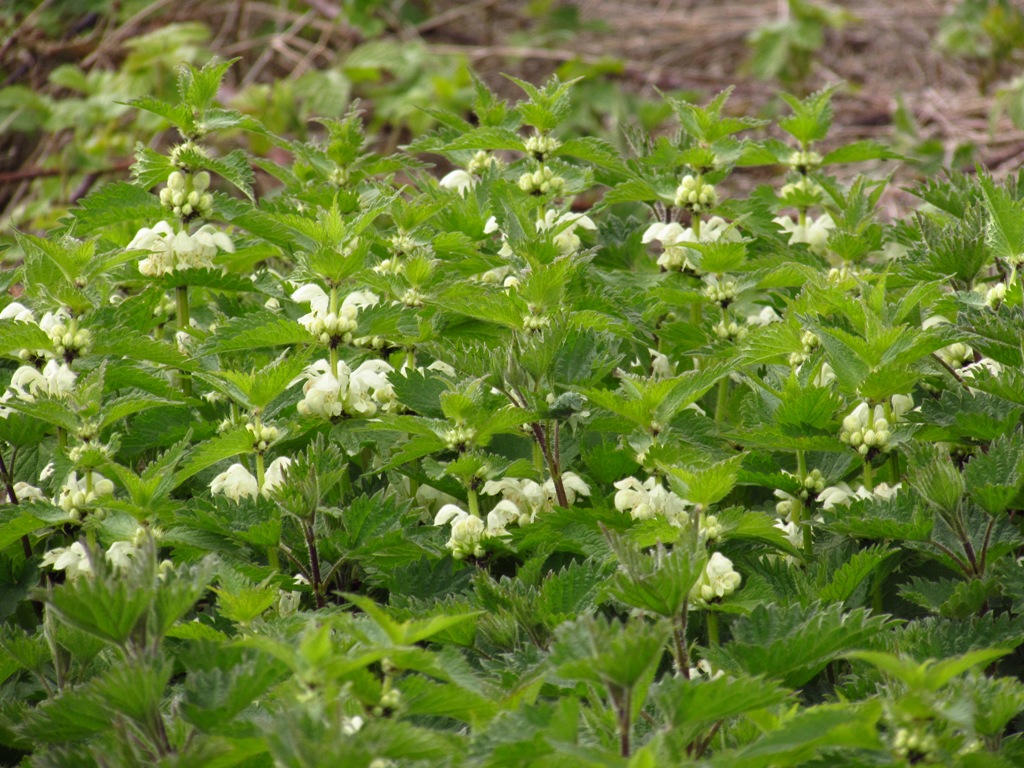
White deadnettle (Lamium album)
White deadnettle is a uterine tonic with an ability to stop loss of fluids from the body, whether excessive menstrual flow, abnormal vaginal discharge, diarrhoea or a runny nose.
The leaves and flowers can be eaten, raw or cooked. The flowers are full of nectar, enjoyed by insects and children alike, and the leaves can be used as a poultice for cuts and splinters.
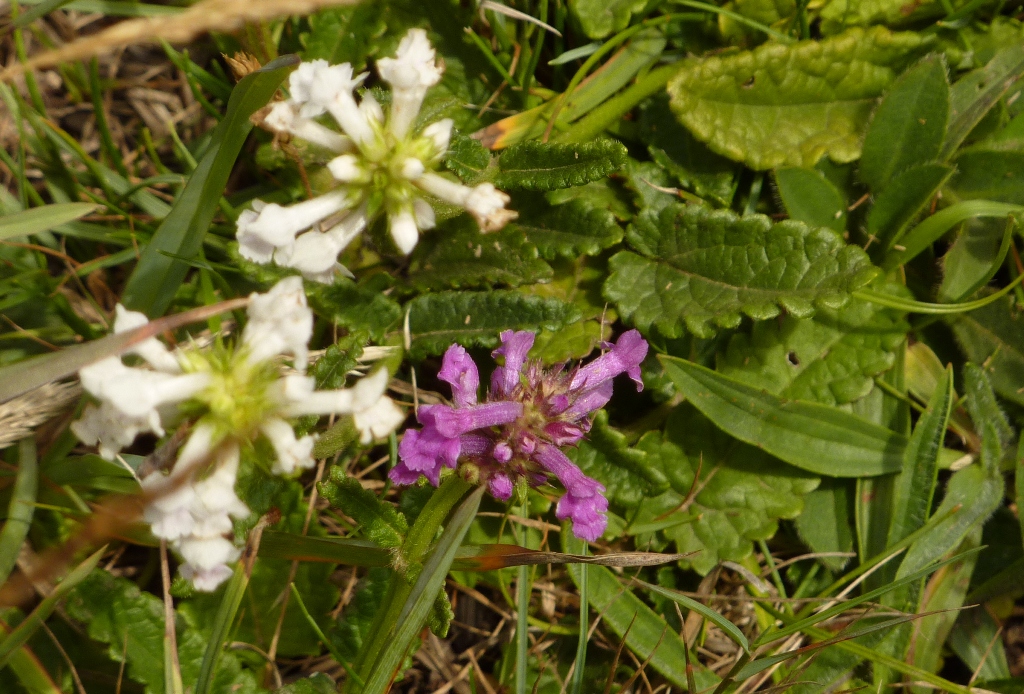
Wood betony (Betonica officinalis)
Wood betony is a nerve tonic, and through its action on the solar plexus has a wide range of benefits, especially on the digestion. It also improves circulation and is excellent for the elderly.
67) Solanaceae or Nightshade family:
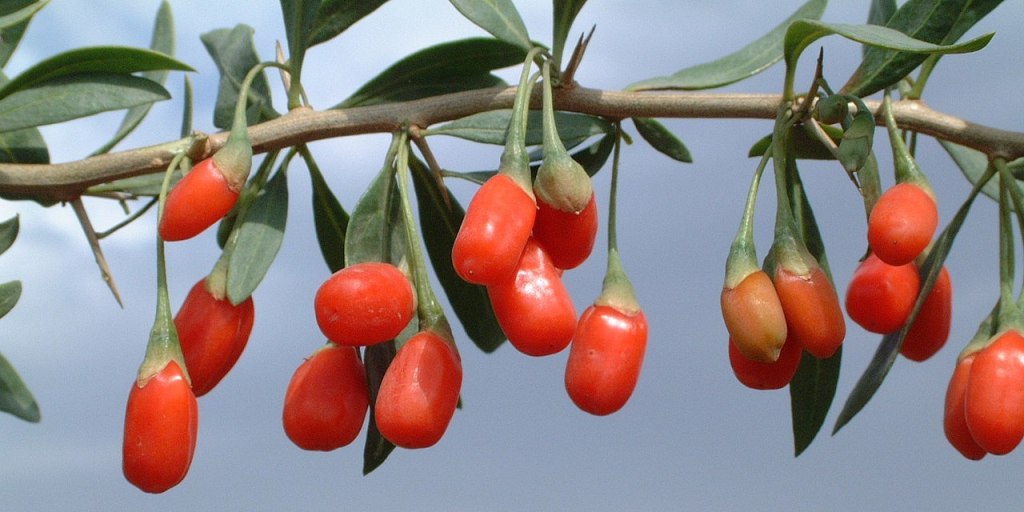
Lycium or Goji berry (Lycium spp.)
Marketed as goji berry, lycium is gaining a reputation as a ‘superfruit’. The berries make a rejuvenating tonic with a wide range of claimed benefits including improving eyesight and helping reduce the side effects of chemotherapy in cancer patients.
68) Scrophulariaceae or the Foxglove/Figwort family:
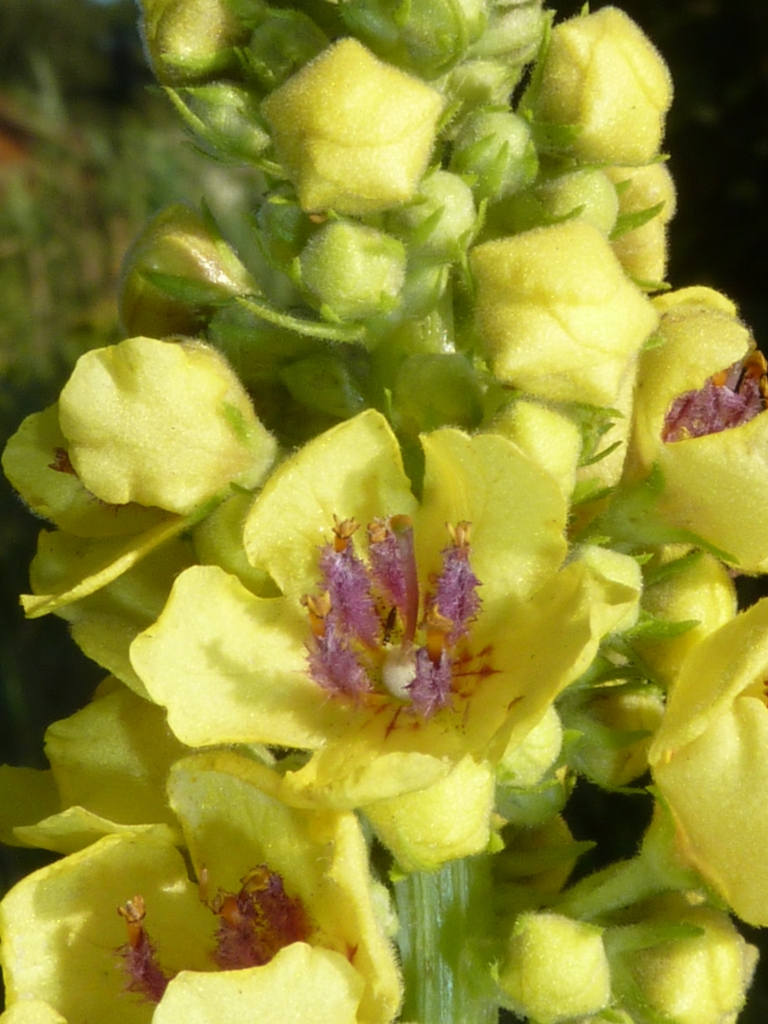
Mullein (Verbascum spp.)
The flowers, infused in oil are a remedy for earache and other nerve pain. The leaves and flowers taken as a tea relieve dry irritable coughs. Mullein, so supple and strong itself, has an affinity for the spine and helps in setting bones.
73) Plantaginaceae or the Plantain family:
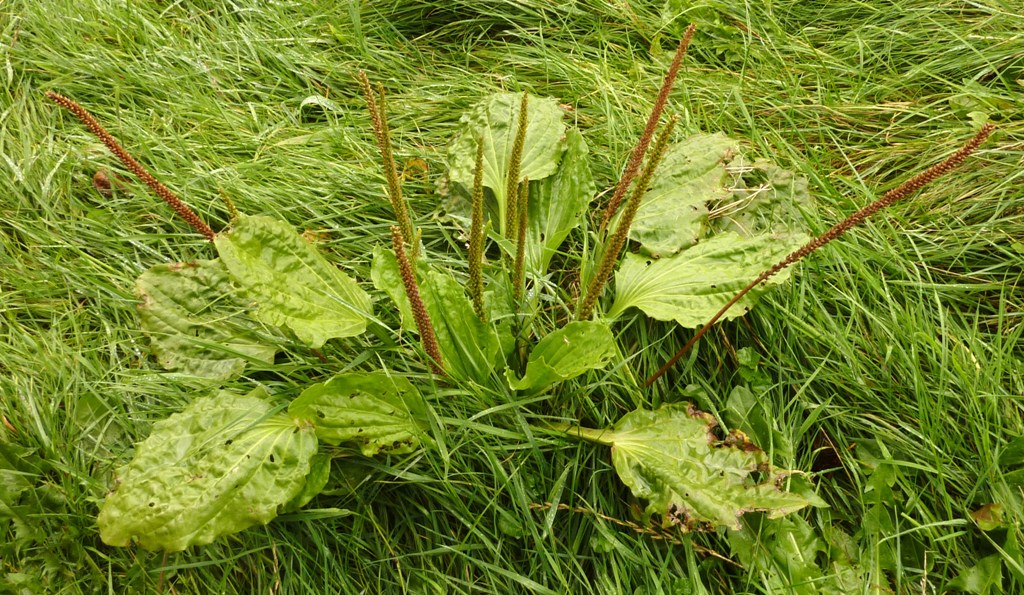
Plantain (Plantago spp.)
Plantain is the best first-aid remedy for insect stings, and quickly deals with bites, cuts and ulcers. It is also effective for a number of common ailments including coughs, bronchitis, sore throats and irritable digestive tracts.
74) Caprifoliaceae or the Honeysuckle family:
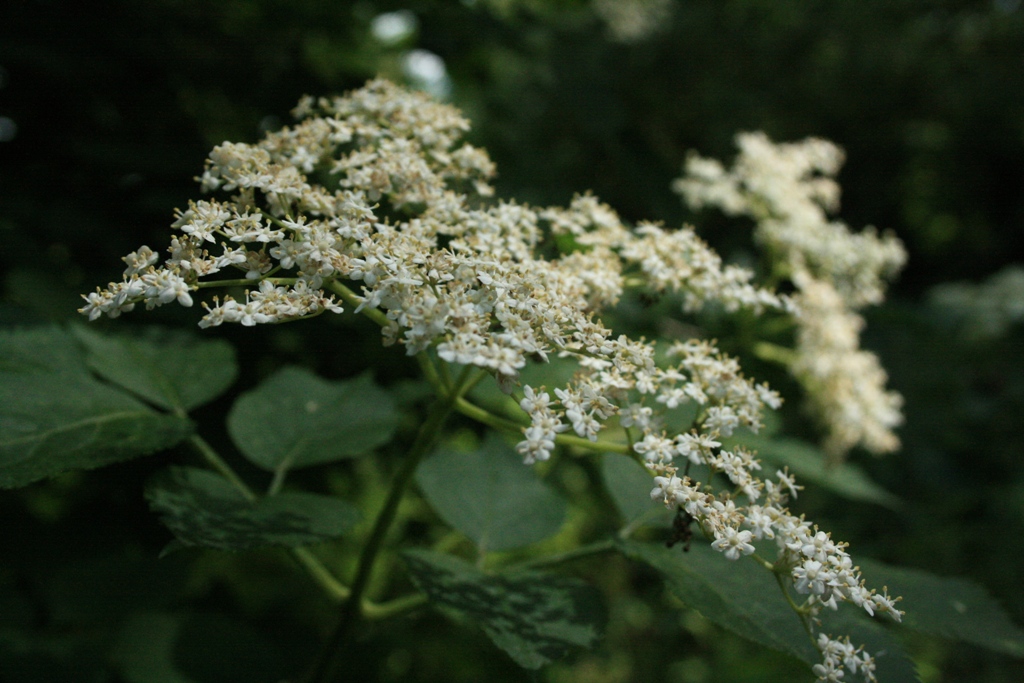
Sambucus nigra or Elder flowers and berries (by Matt Summers)
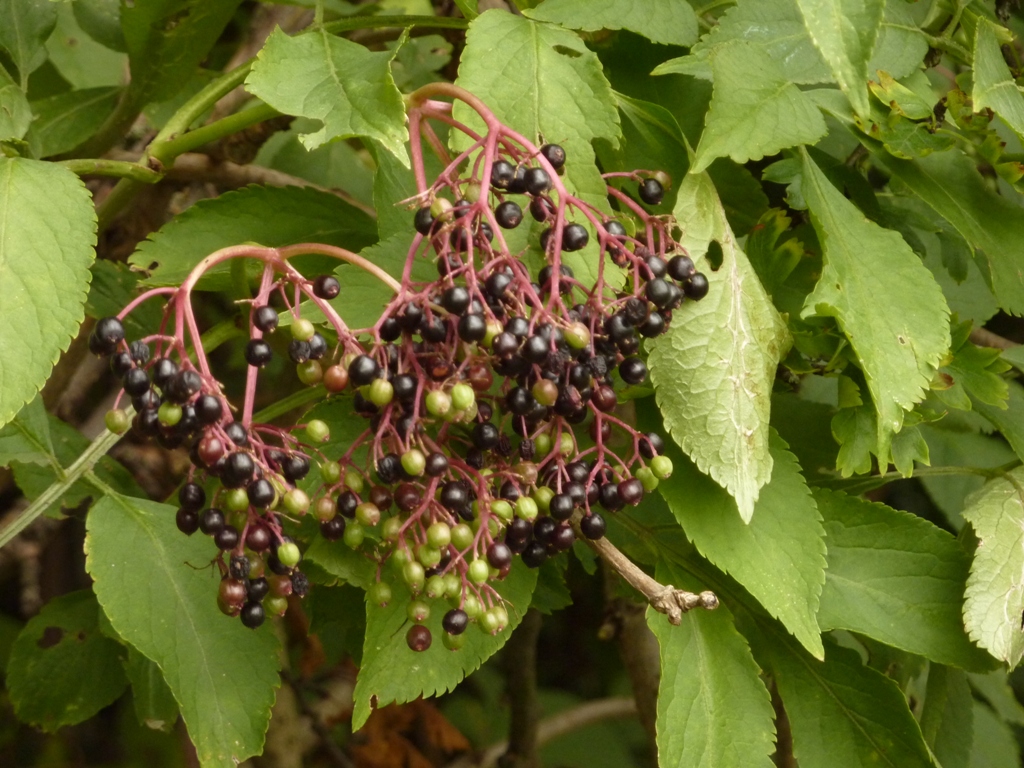
Elder (Sambucus nigra)
The Elder has been described as a whole medicine-chest in one plant. the flowers remain a wonderful fever remedy. The berries work against flu and colds and help relieve coughs. The leaves as an ointment are good for bruises.
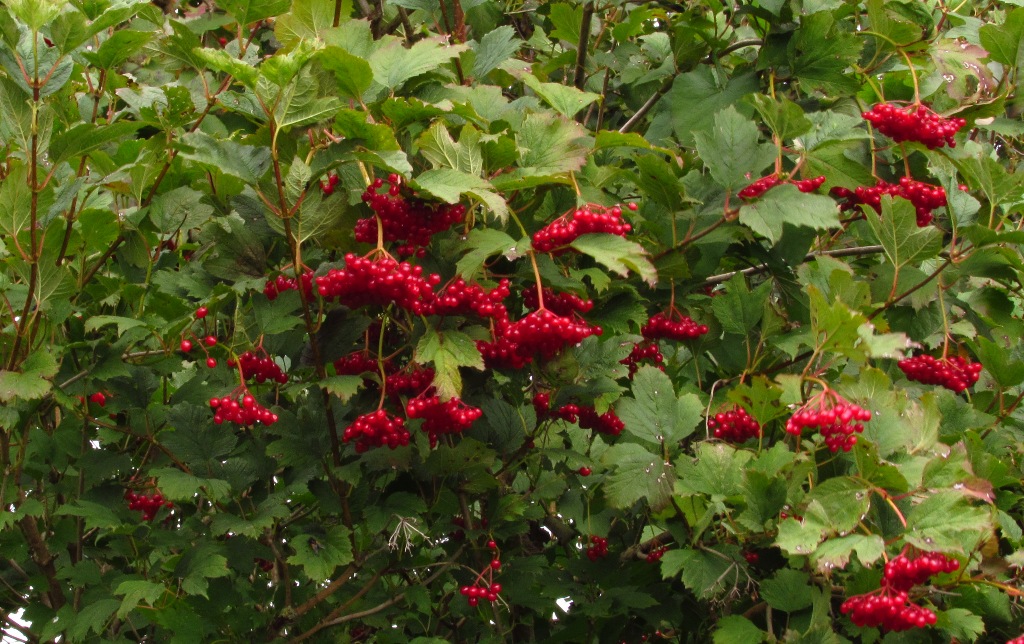
Guelder rose (Viburnum opulus)
Guelder rose is able to relieve muscle tension, both in skeletal muscles and in the smooth muscle of the intestines, lungs and uterus. It is used on its own for cramps and muscle spasms, including uterine cramps, back pain, fibromyalgia and irritable bowel syndrome and in formulae for high blood pressure, arthritis and nervous tension.
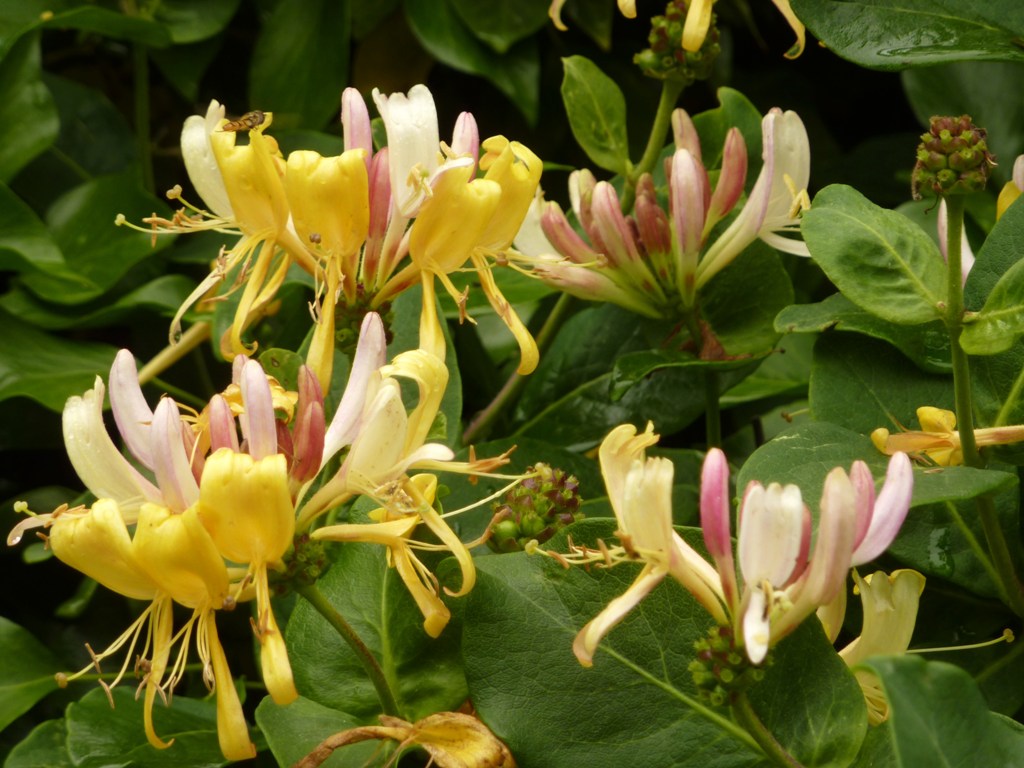
Honeysuckle (Lonicera periclymenum)
Honeysuckle is valued medicinally as a cooling herb. It has benefits for menopausal hot flushes, flu, fevers, heat stroke, urinary tract infections and other hot conditions. The flowers have similar qualities to asperin and are strongly antiseptic, being effective against a range of micro-organisms.
76) Dipsacaceae or the Teasel family:
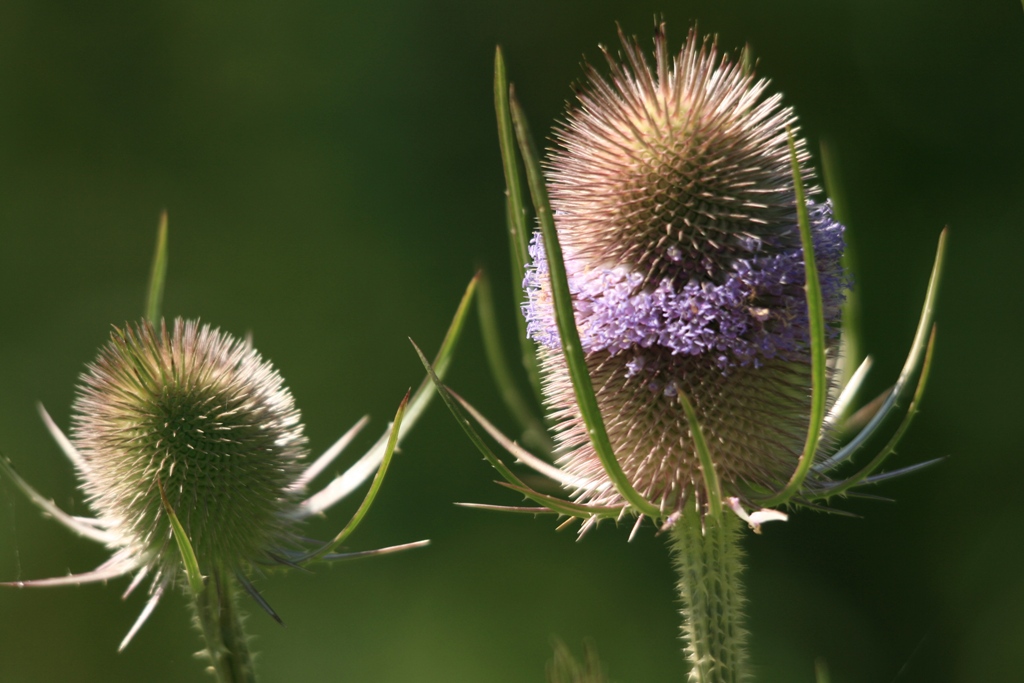
Teasel (Dipsacus fullonum)
Teasel helps with joint and tendon injuries, muscle pain and inflammation, chronic arthritis and lower back weakness. it is presently being used for Lyme disease, ME and fibromyalgia.
81) Asteraceae (Compositae) or the Daisy family:
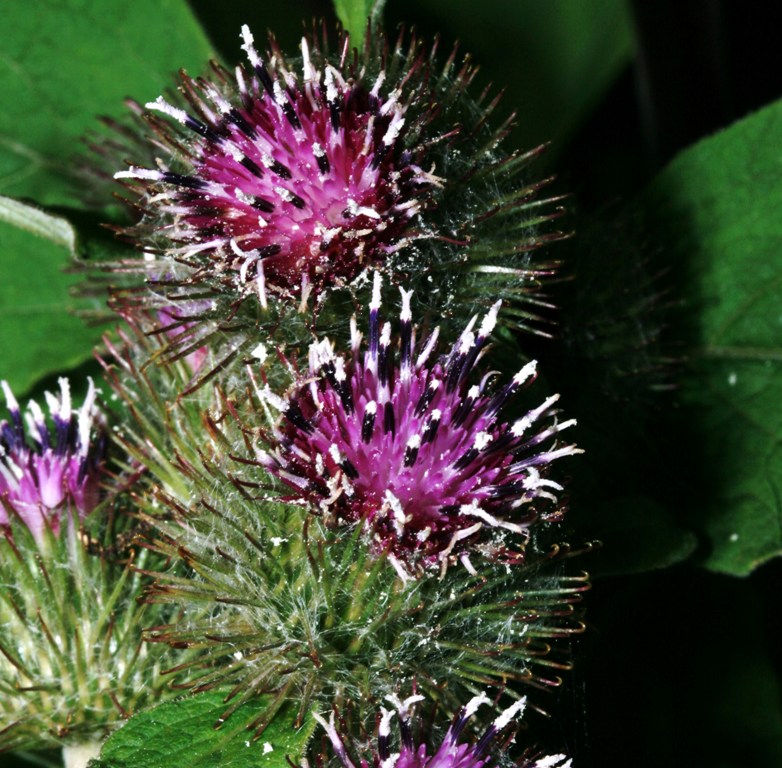
Arctium spp. or Burdock flowers and rosette of leaves (by Matt Summers)
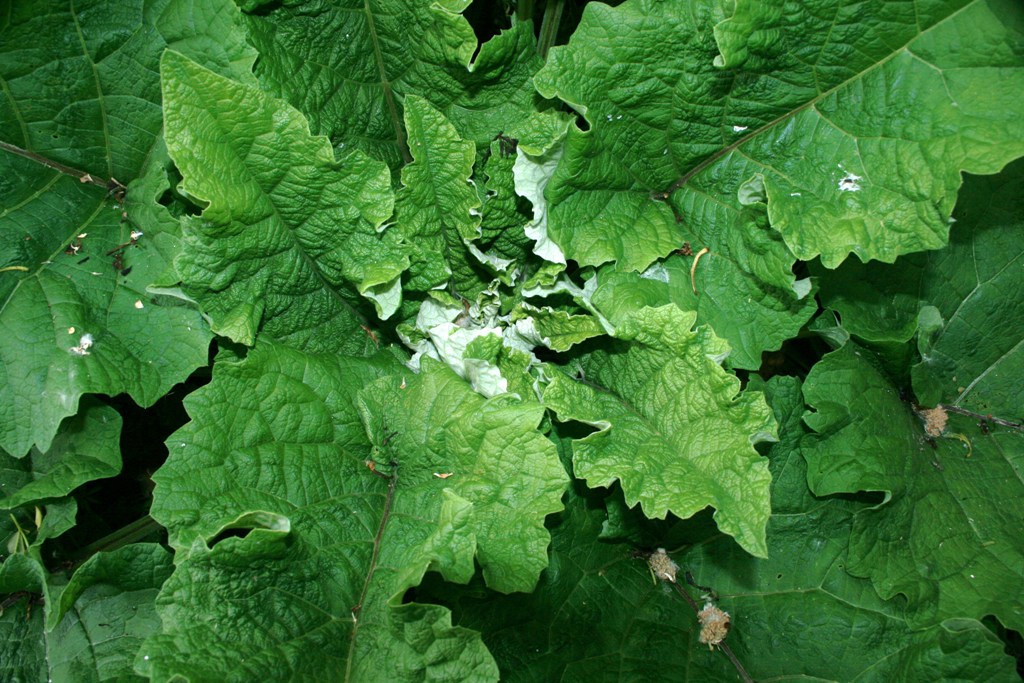
Burdock (Arctium spp.)
“Traditionally combined with dandelion both as a soft drink and a medicine, burdock is a powerful cleanser and blood purifier. It is one of the foremost detoxing herbs, and is particularly effective for skin problems. The root is a food as well as a medicine, and is popular in Japanese cooking.”
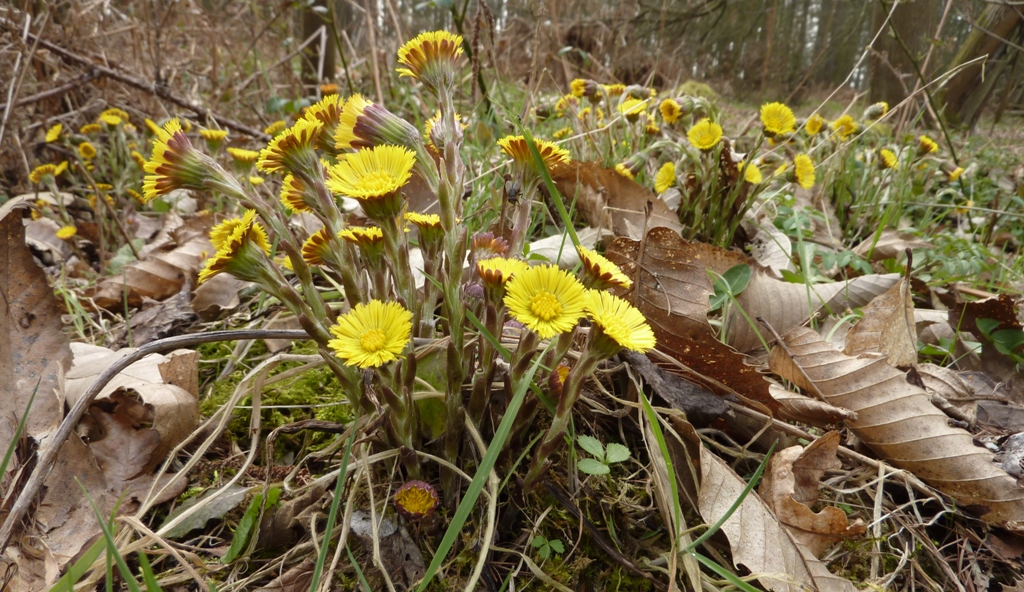
Tussilago farfara or Coltsfoot (by Matt Summers)
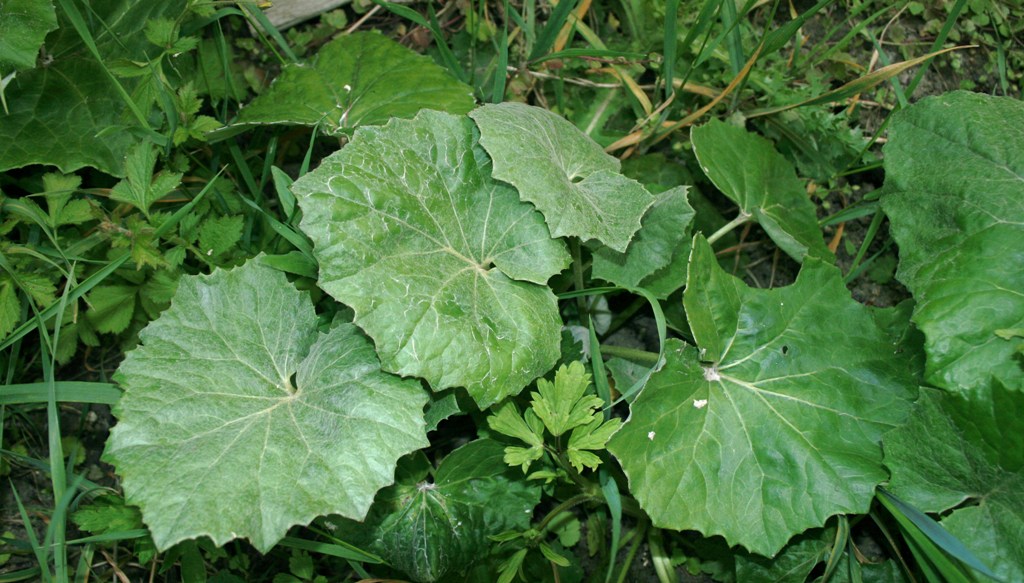
Coltsfoot (Tussilago farfara)
“Coltsfoot is one of the earliest plants of the herbalist’s year, and its leaves and flowers make an effective cough remedy.”
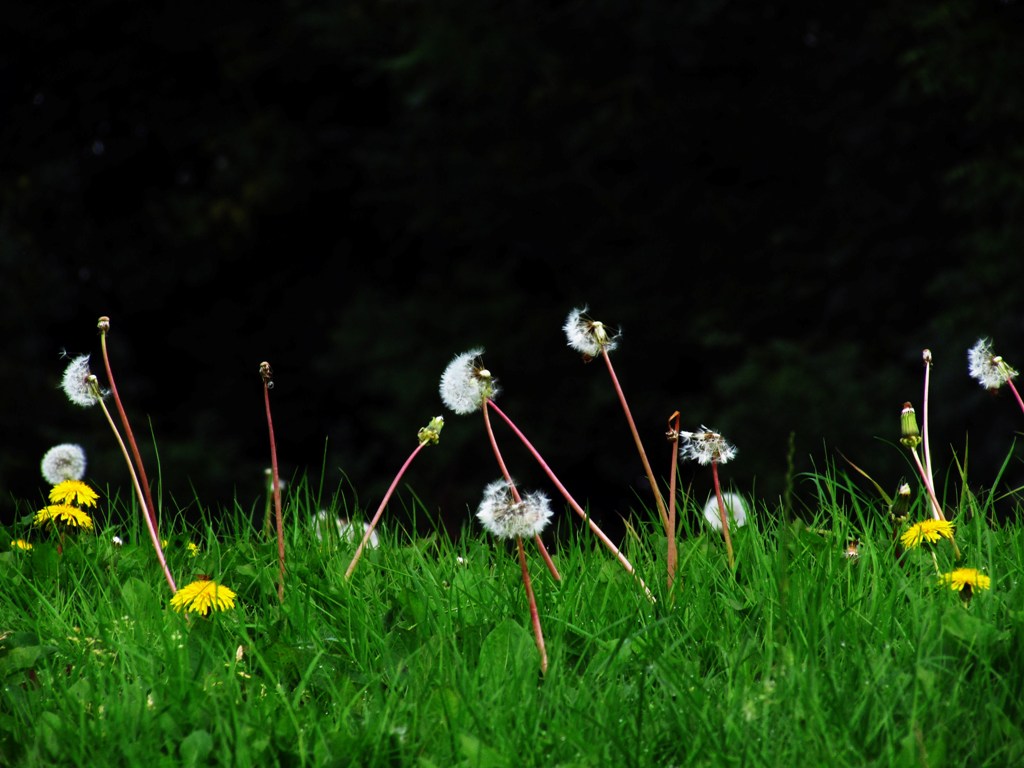
Dandelion (Taraxacum agg.)
Dandelion is a wonderful food as well as a beneficial medicine. It supports overall health by gently working to improve the functioning of the liver, gallbladder, and urinary and digestive systems. It is excellent for cleansing the skin.
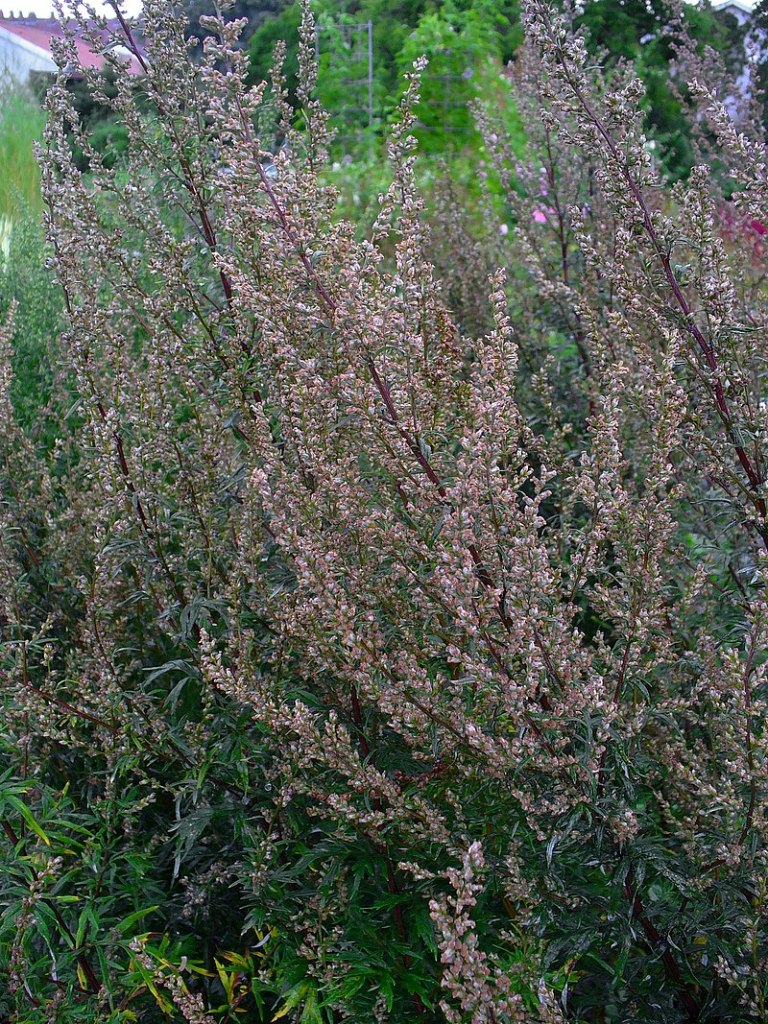
Mugwort (Artemisia vulgaris)
Mugwort is a stately, self-assured perennial, a tall summer presence at two or even three metres high, found in country and town alike. It is however, far more than a roadside curiosity.
It is an ancient herb of healing, magic and divination throughout the world, a protector of women and travellers, renowned for its value in feminine disorders, and as strong warming tonic. Mugwort was used in making ale in Europe before hops.
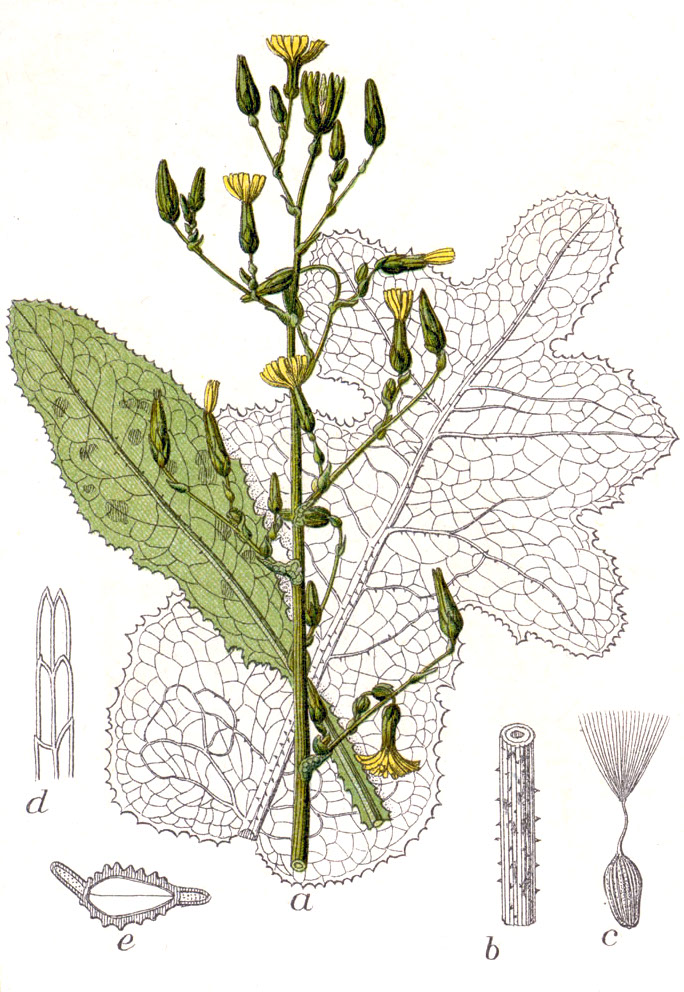
Wild Lettuce (Lactuca virosa & L. serriola)
If you grew up with Beatrix Potter, you know from the Tale of the Flopsy Bunnies that eating flowering lettuces makes you sleepy. Our garden lettuces have been bred to reduce their bitterness, and as a result have far less of a soporific effect than wild lettuce.
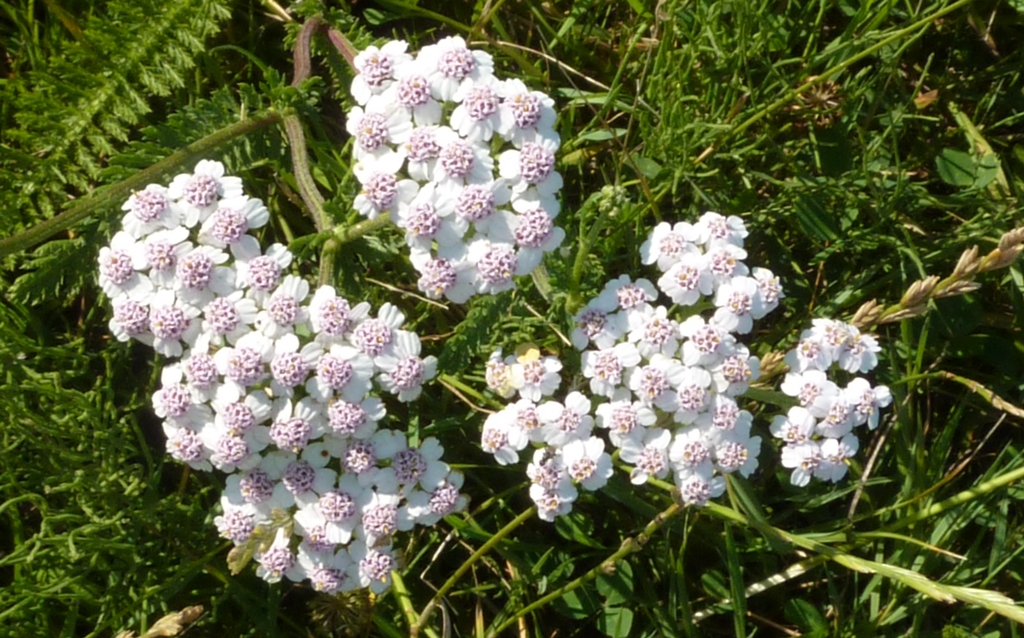
Achillea millefolium or Yarrow (by Matt Summers)
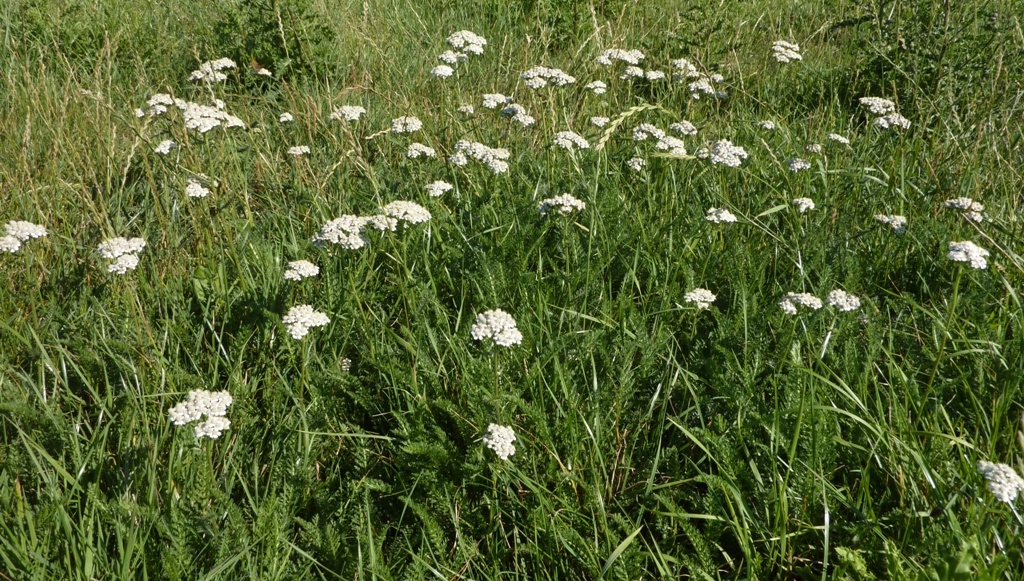
Yarrow (Achillea millefolium)
Yarrow is a leading hedgerow medicine plant. A ready first-aid treatment for wounds and nosebleeds, it has larger uses as a circulatory system remedy tat both stops bleeding and moves stagnant blood, preventing and clearing blood clots. It tones the blood vessels and lowers high blood pressure.
Yarrow is beneficial for a wide range of menstrual problems, and is a first-rate fever herb, used as a hot tea to induce sweating.
MONYCOTYLEDONS
81) Liliaceae or the Lily family:
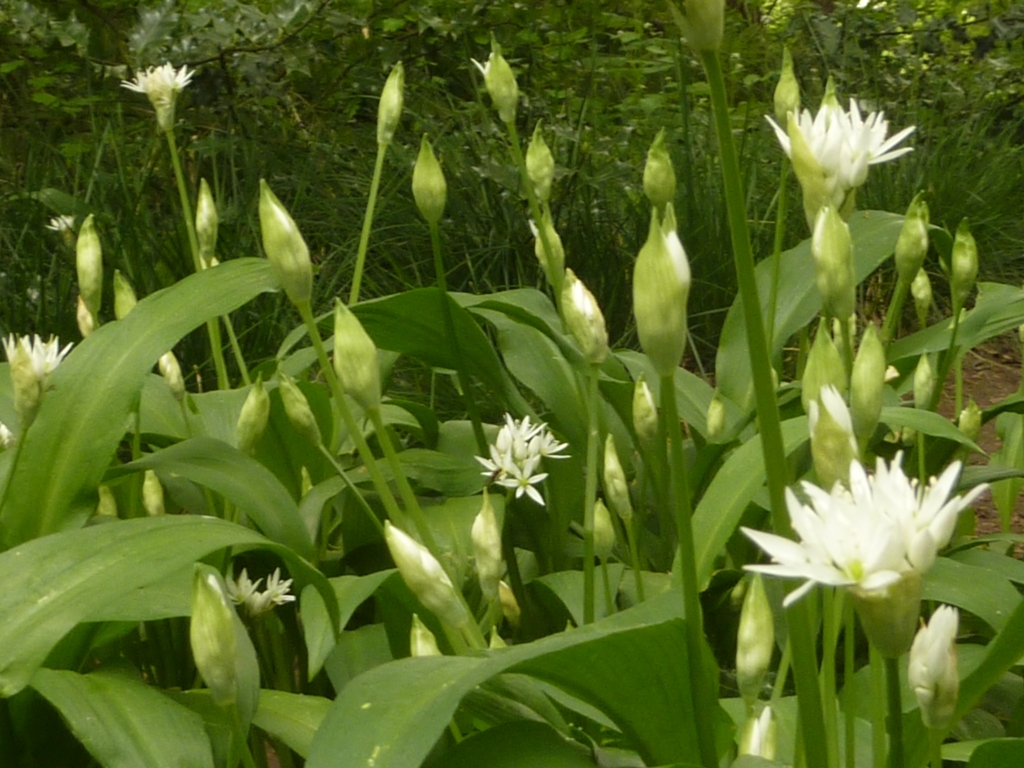
Ramsons (Allium ursinum)
Finding a swathe of ramsons (wild garlic) in a dark wood is one of the joys of early spring, with the bright green leaves and strong garlic smell tempting you to gather for the pot.
This is also a wonderful medicine for the digestive tract, and helps keep the heart and circulation healthy. Ramsoms cleanses the body, balancing the gut flora, and is effective in removing infections.
85) Poaceae (Gramineae) or the Grass family:
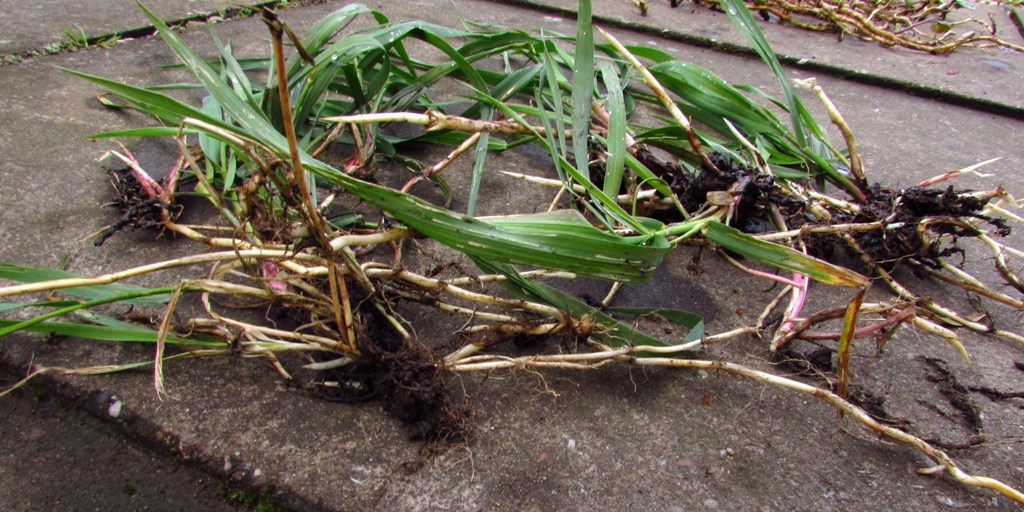
Couch grass (Elytrigia repens)
This invasive grass is both gardener’s foe and herbalist’s friend. The couch grass rhizomes that gardeners hate possess soothing, diuretic and antibiotic qualities that have long been valued for making a tea to treat urinary problems, including cystitis, kidney stones and prostate enlargement.
SPHENOPSIDA – Equisetaceae or Horsetails:
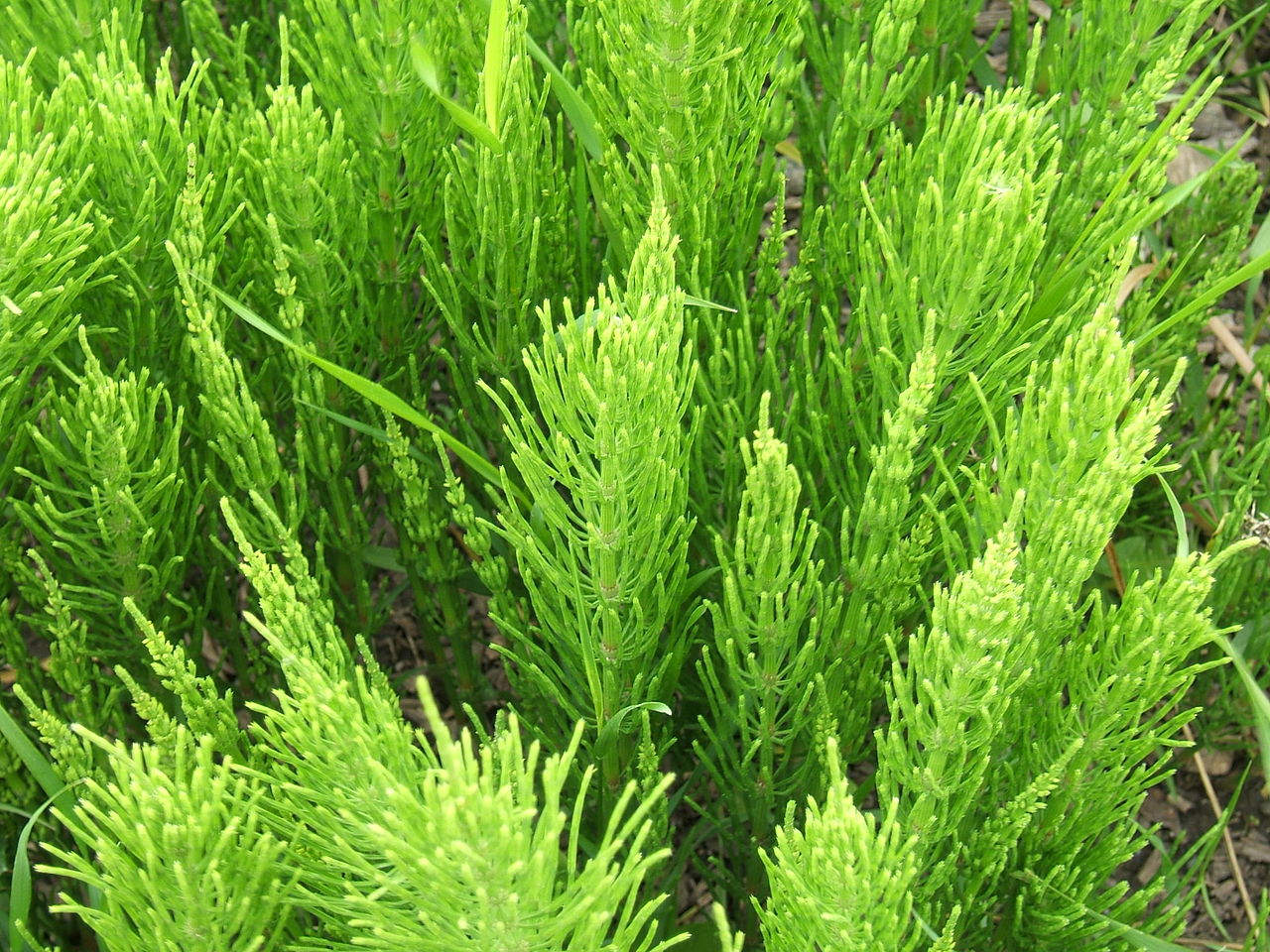
Horsetail (Equisetum arvense)
Horsetail is one of the oldest of plants and a long-used folk remedy for the urinary system, cystitis, incontinence, bedwetting and prostate problems. It is the leading source of plant silica, and so helps where this mineral is deficient, as shown by symptoms like brittle nails, thin hair and allergies. Externally, it is good for rheumatism, chilblains and skin problems, and helps wounds, joints and sprains to heal.

